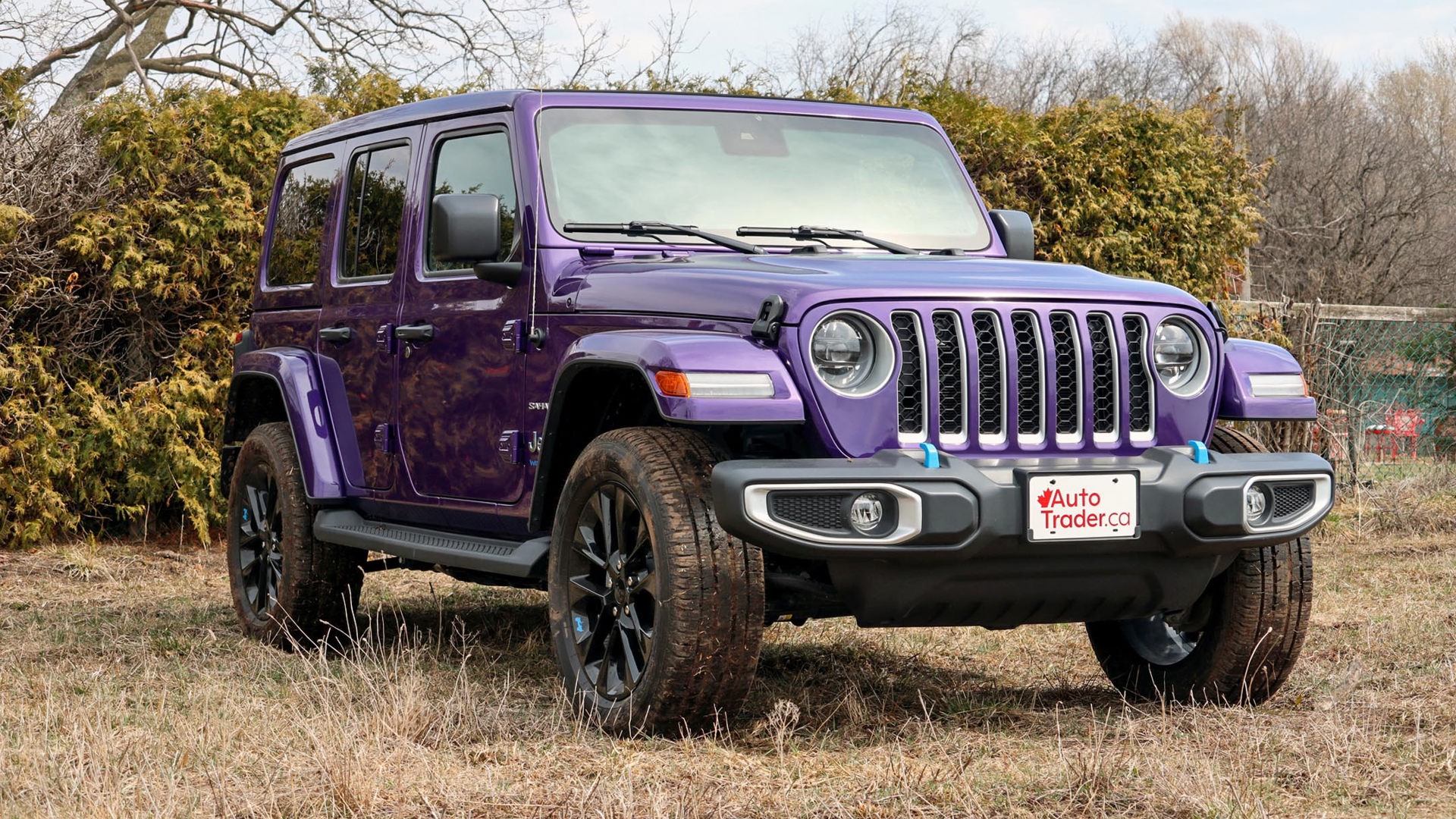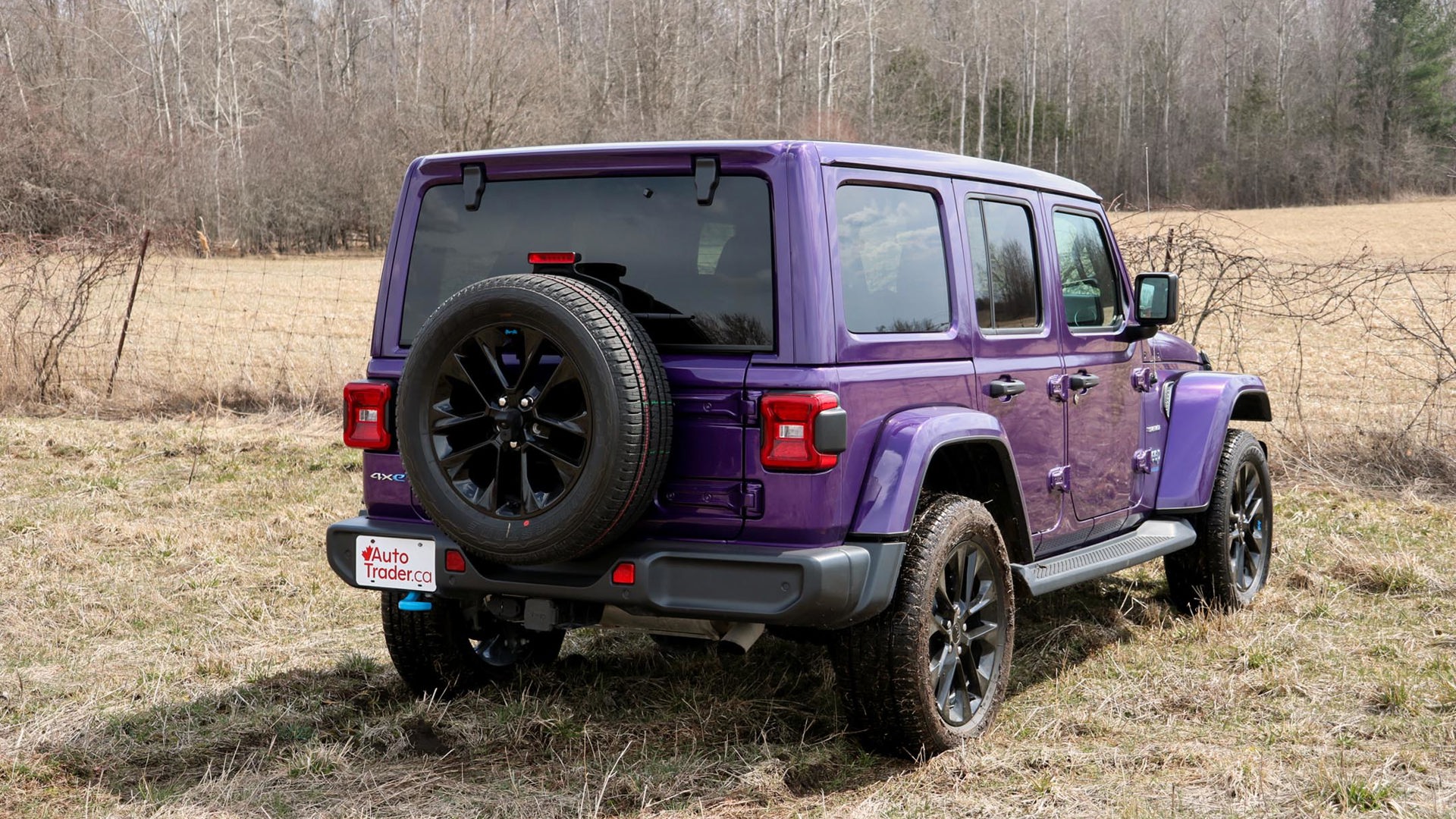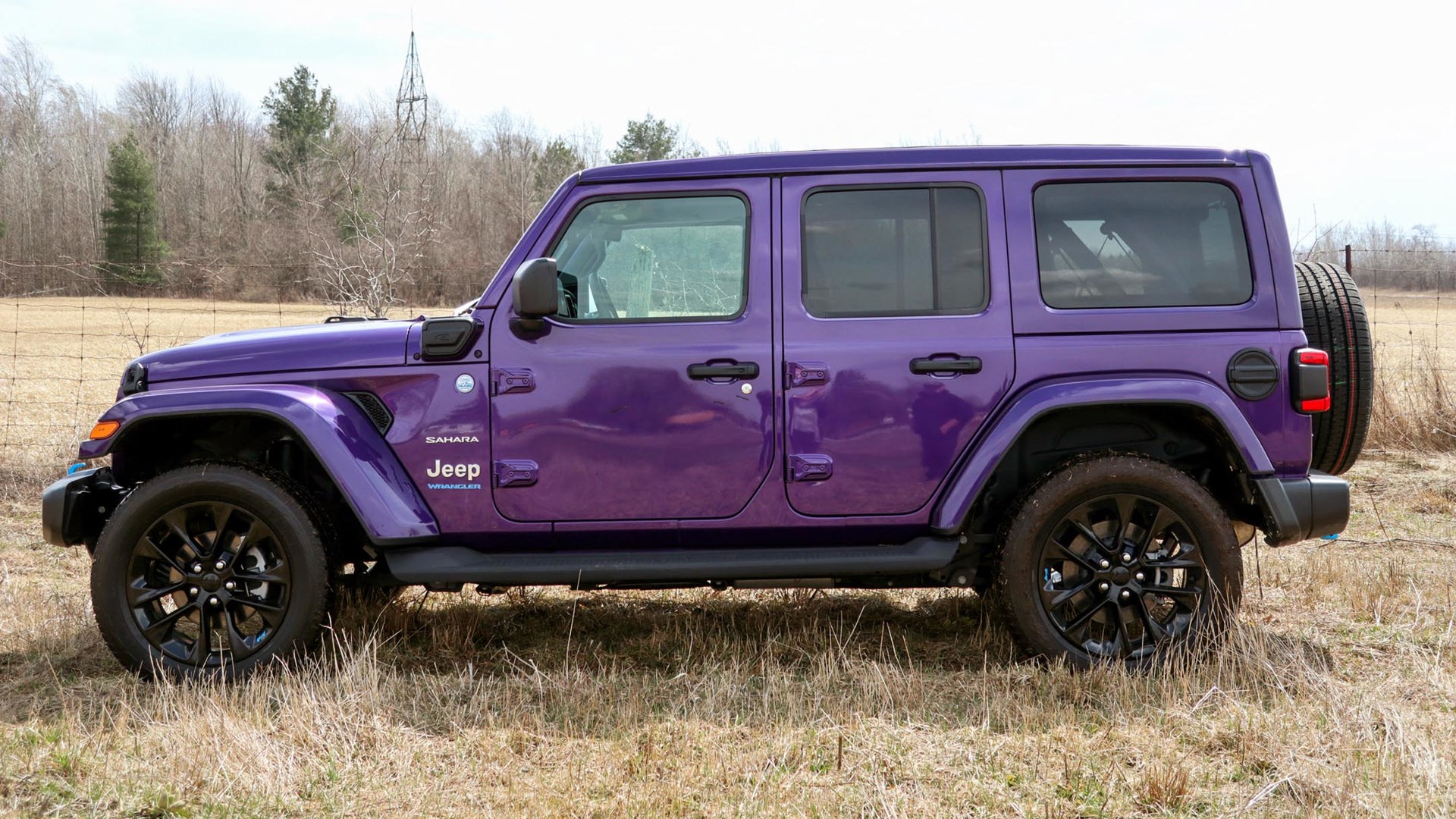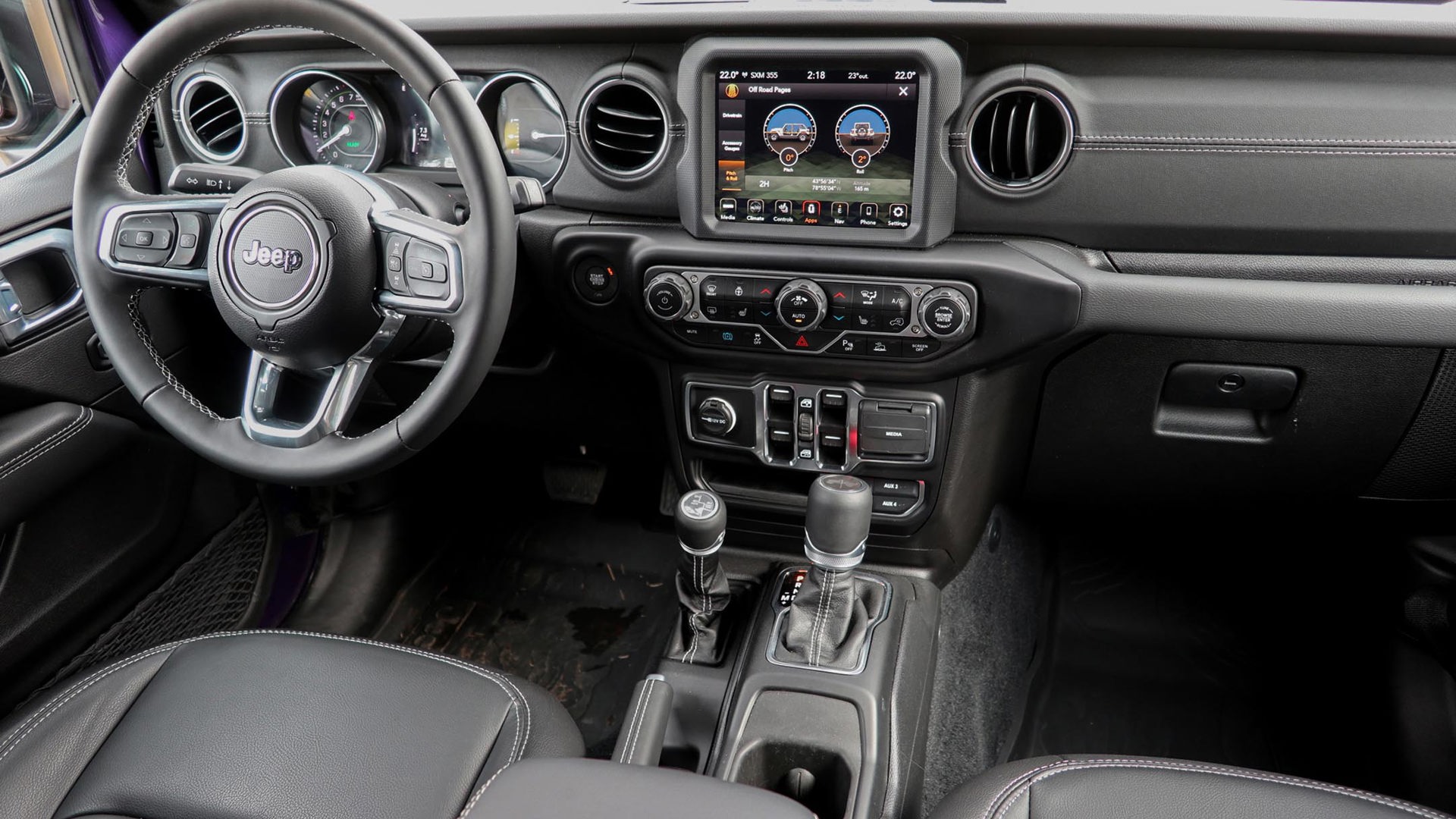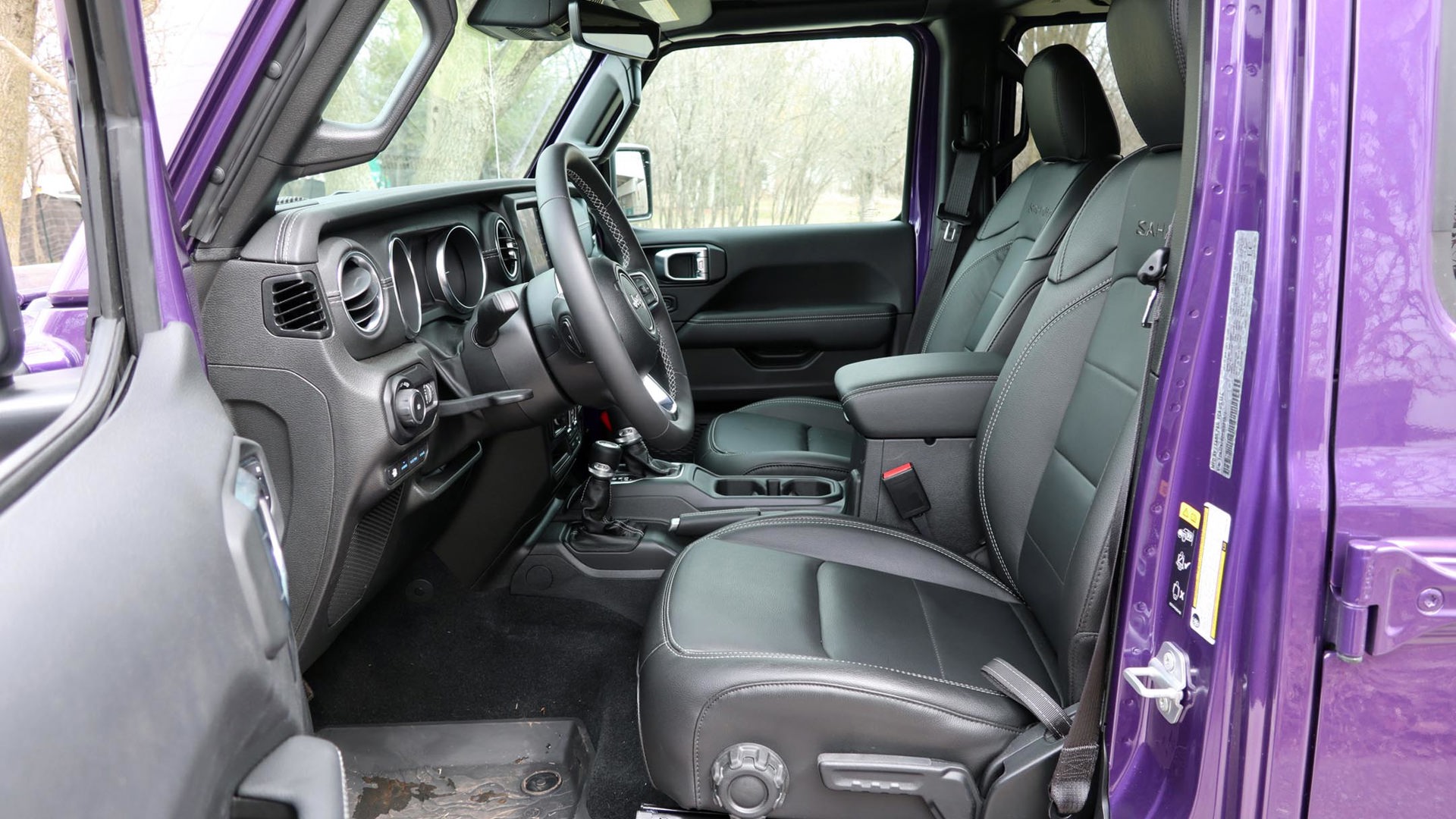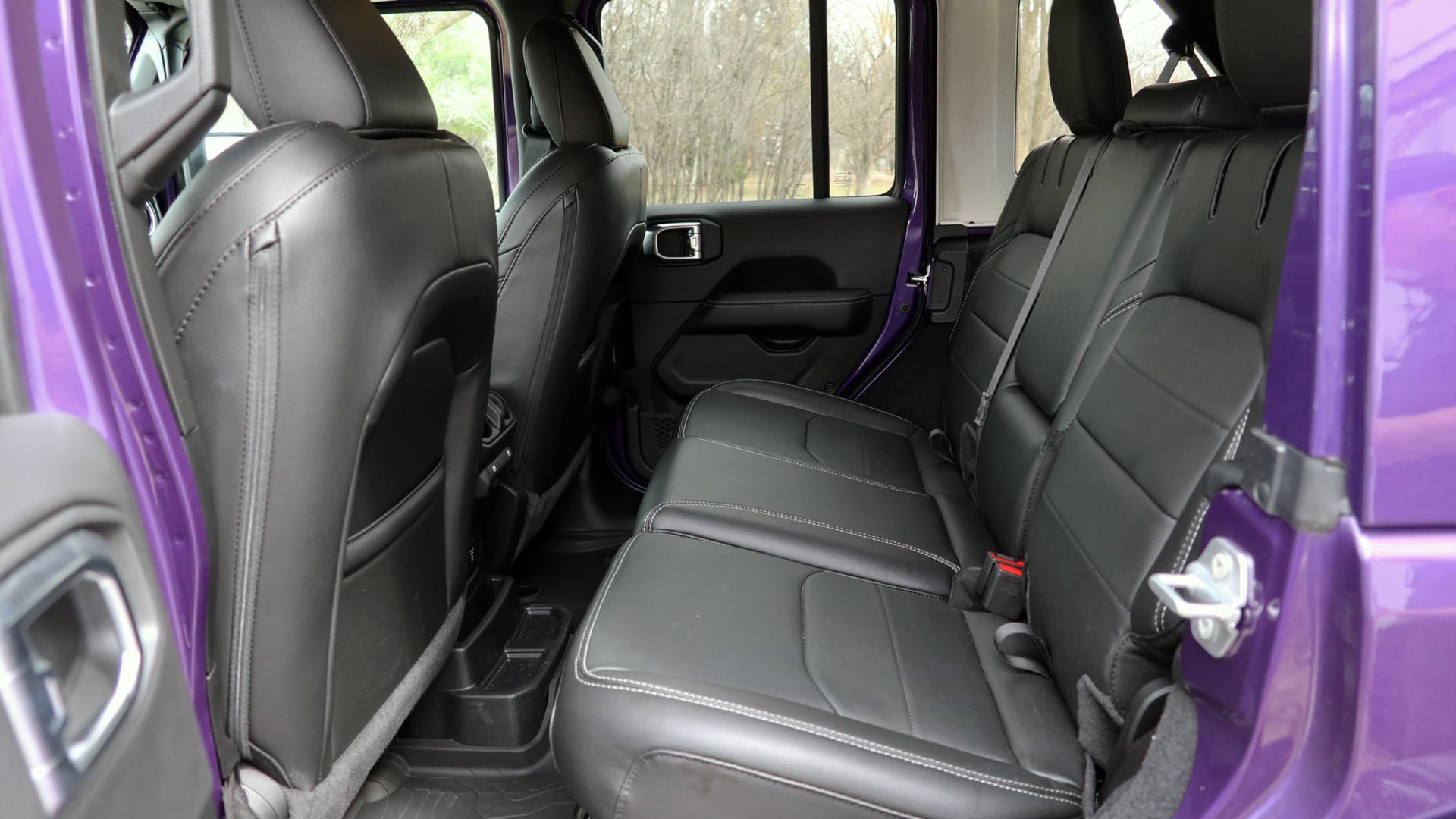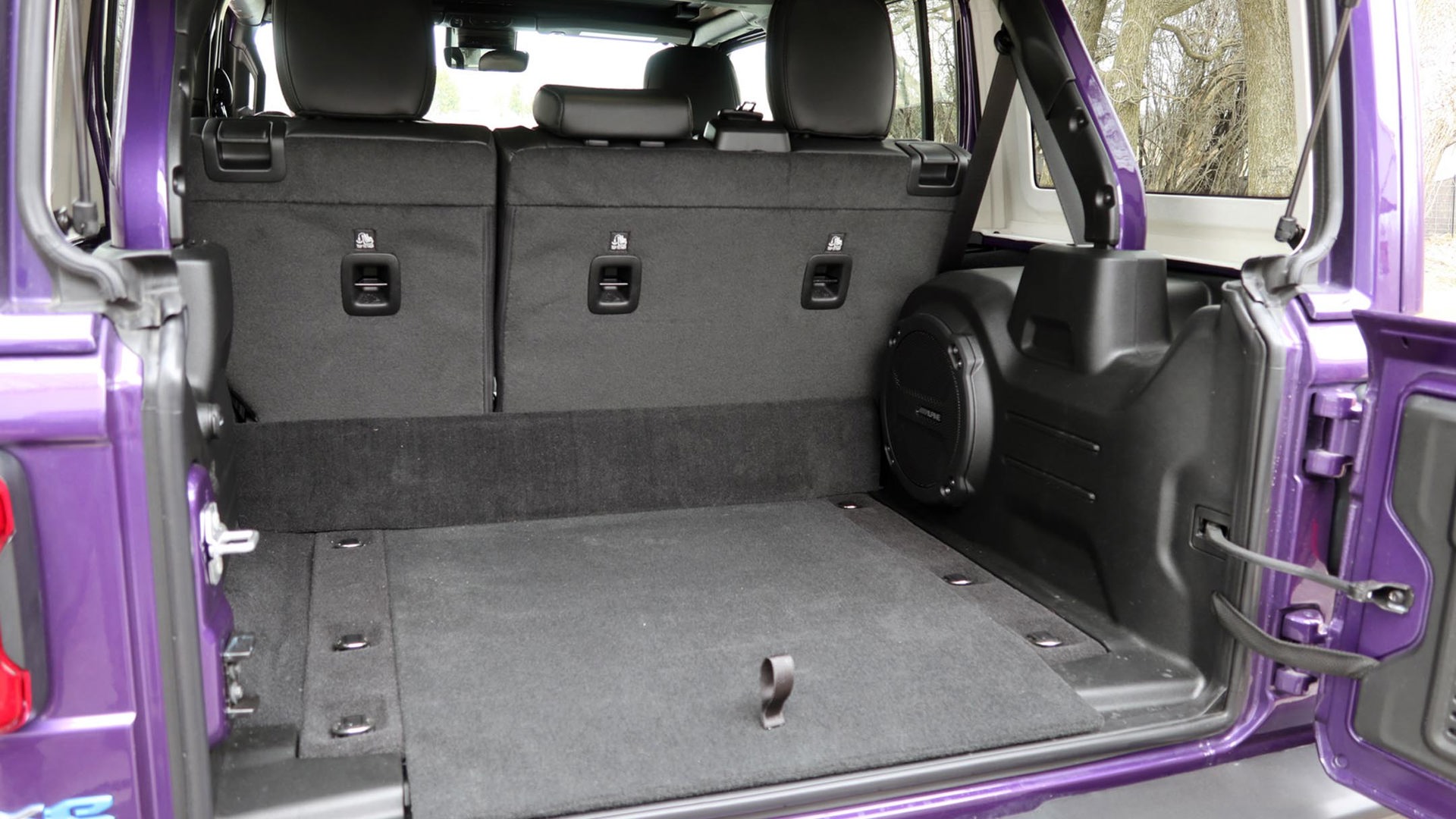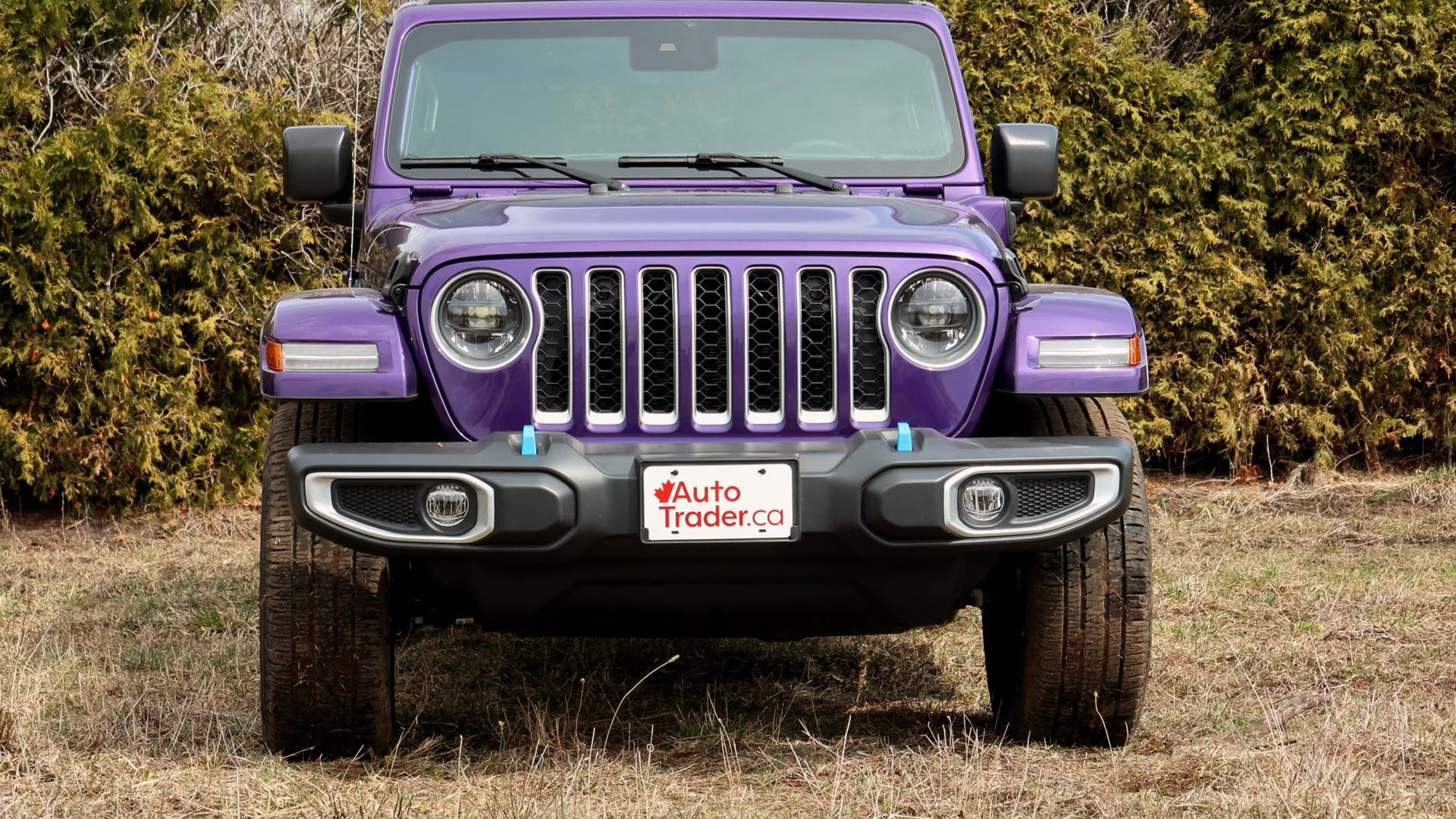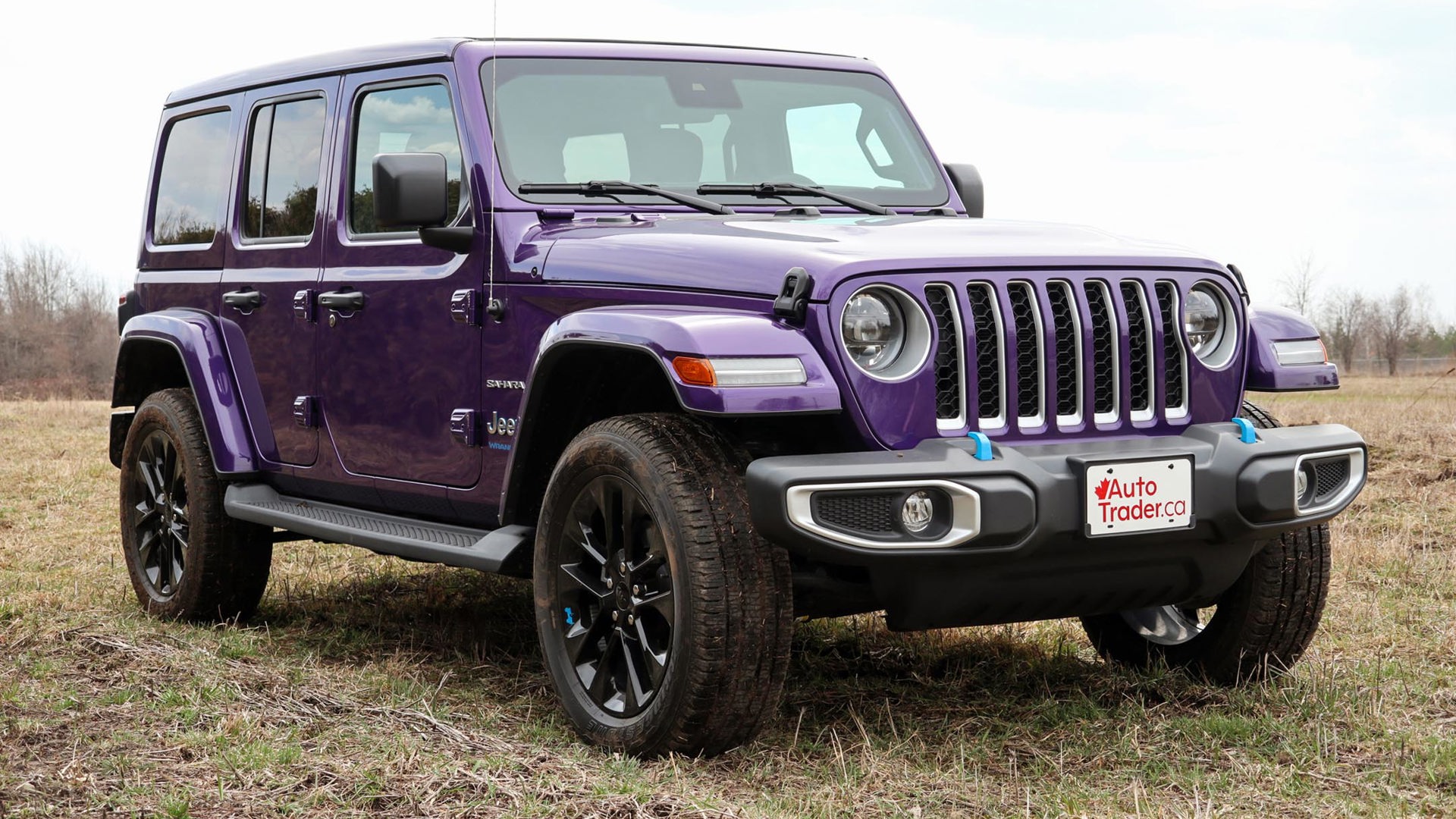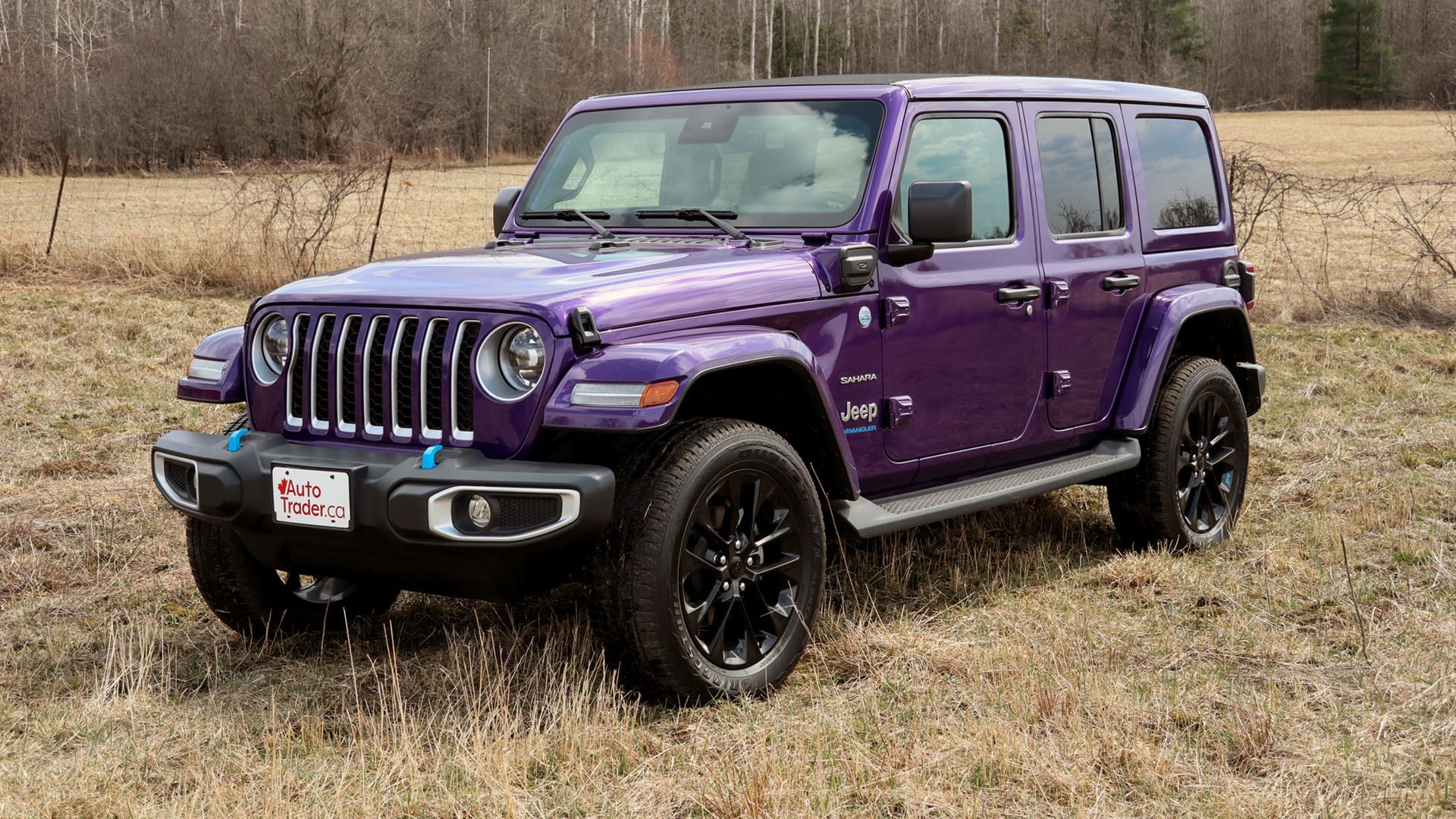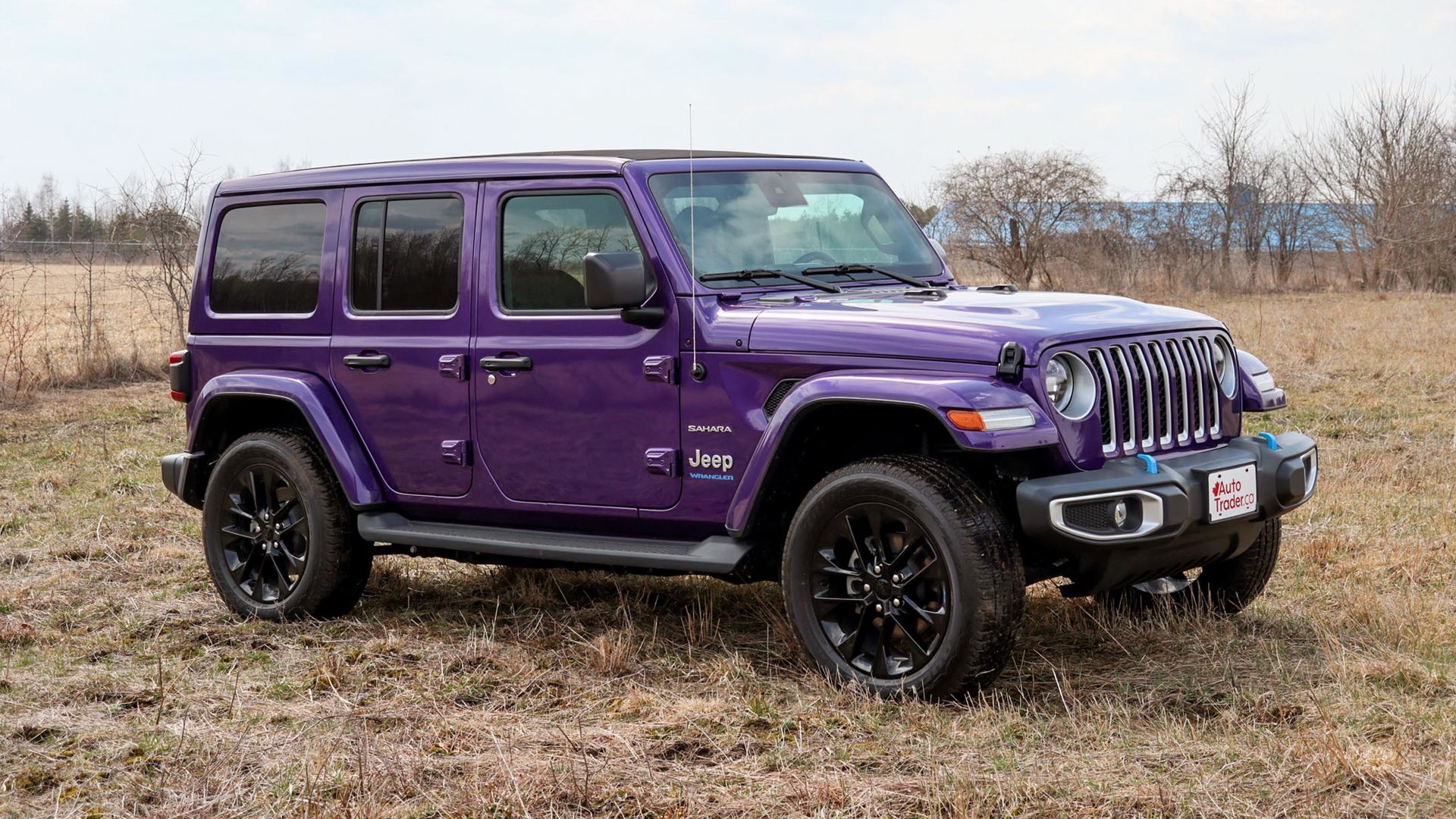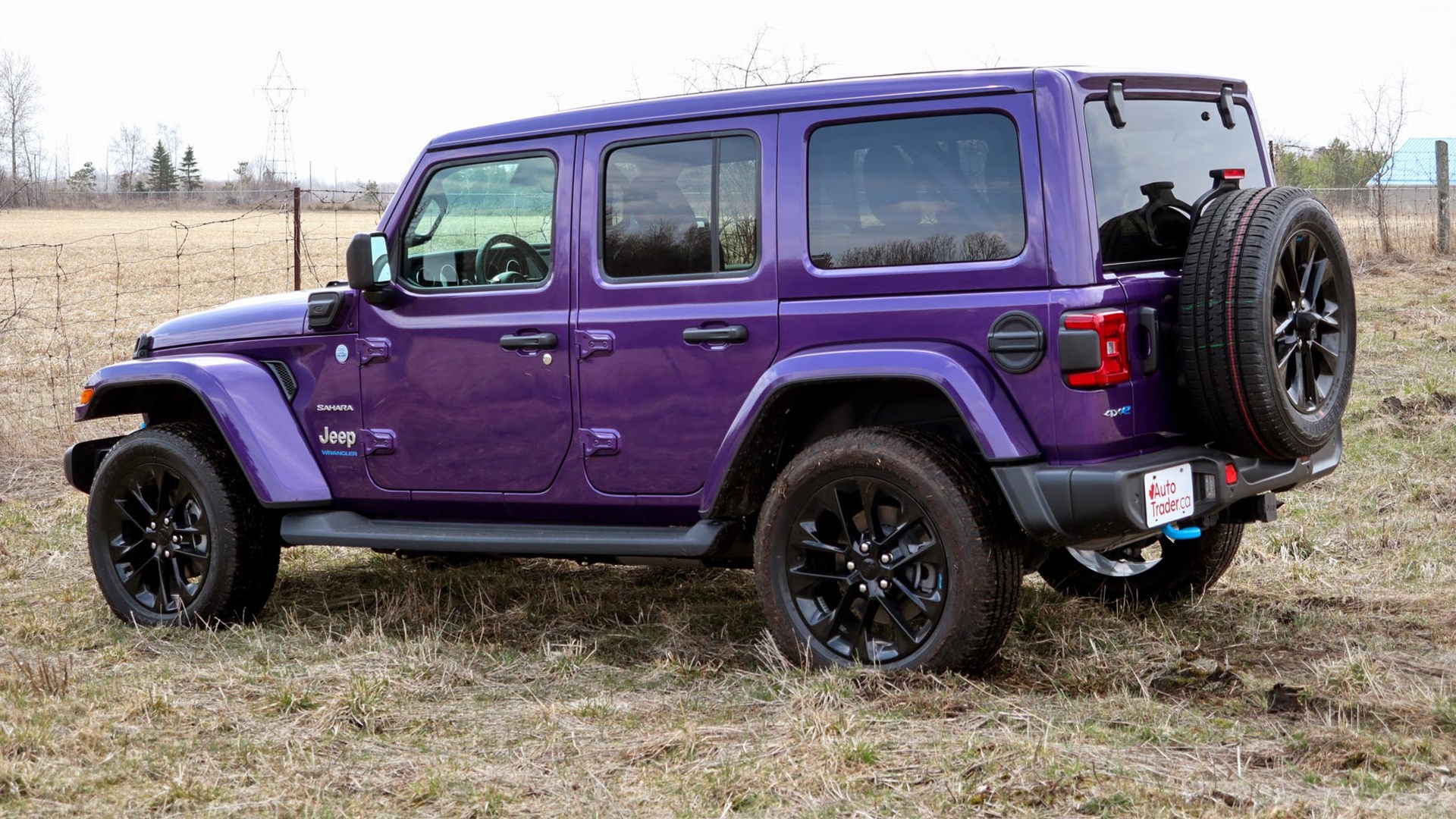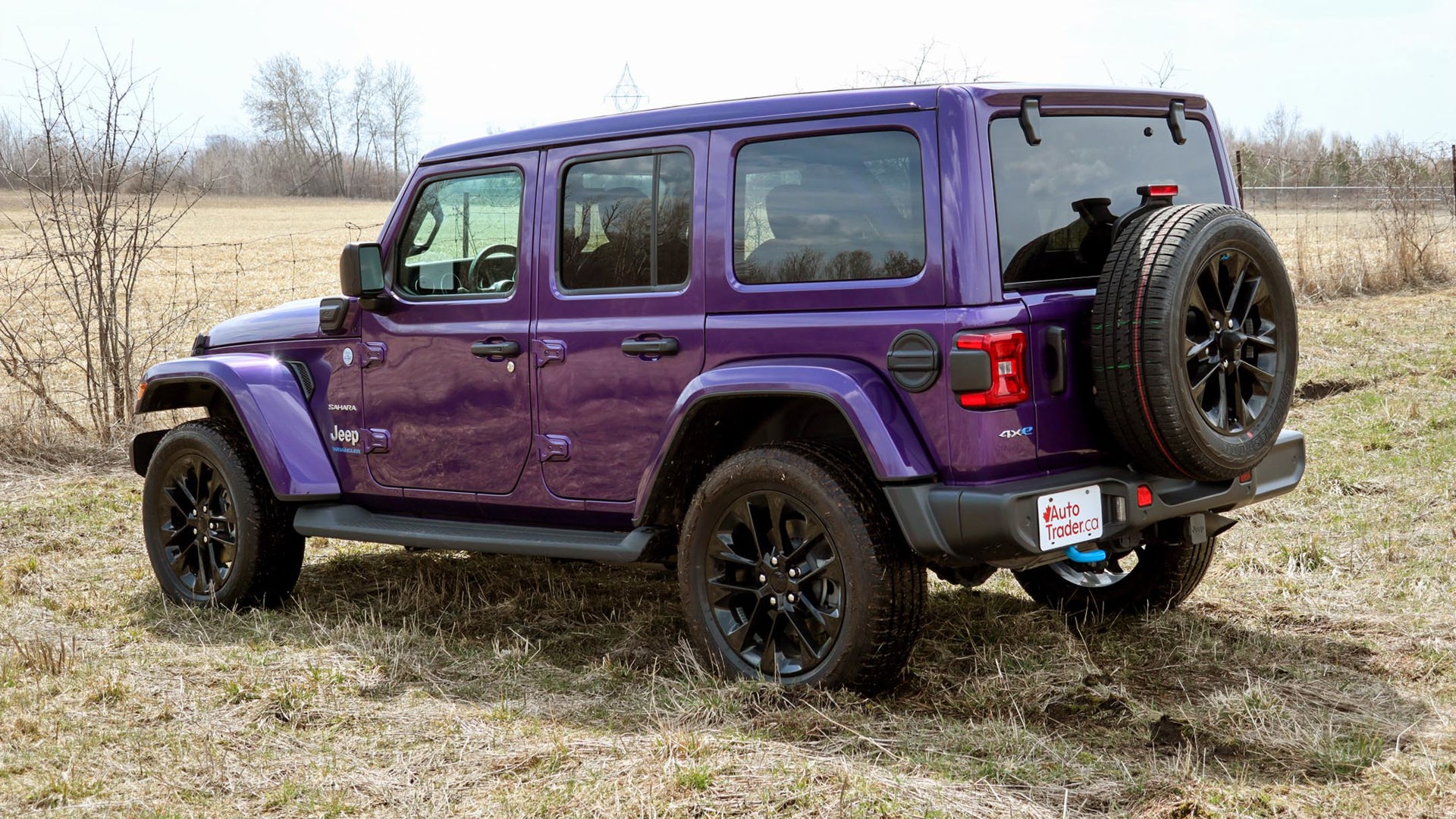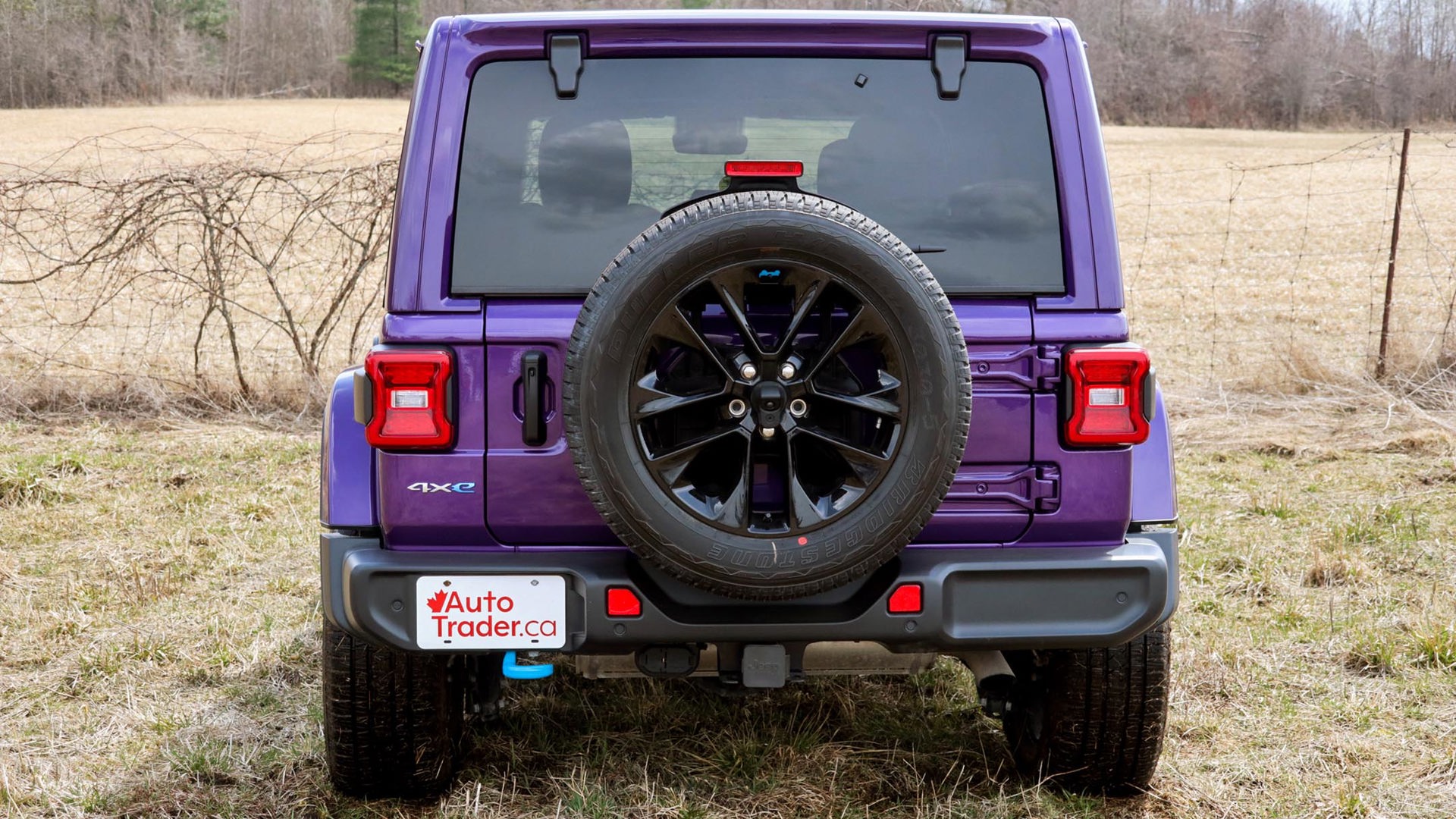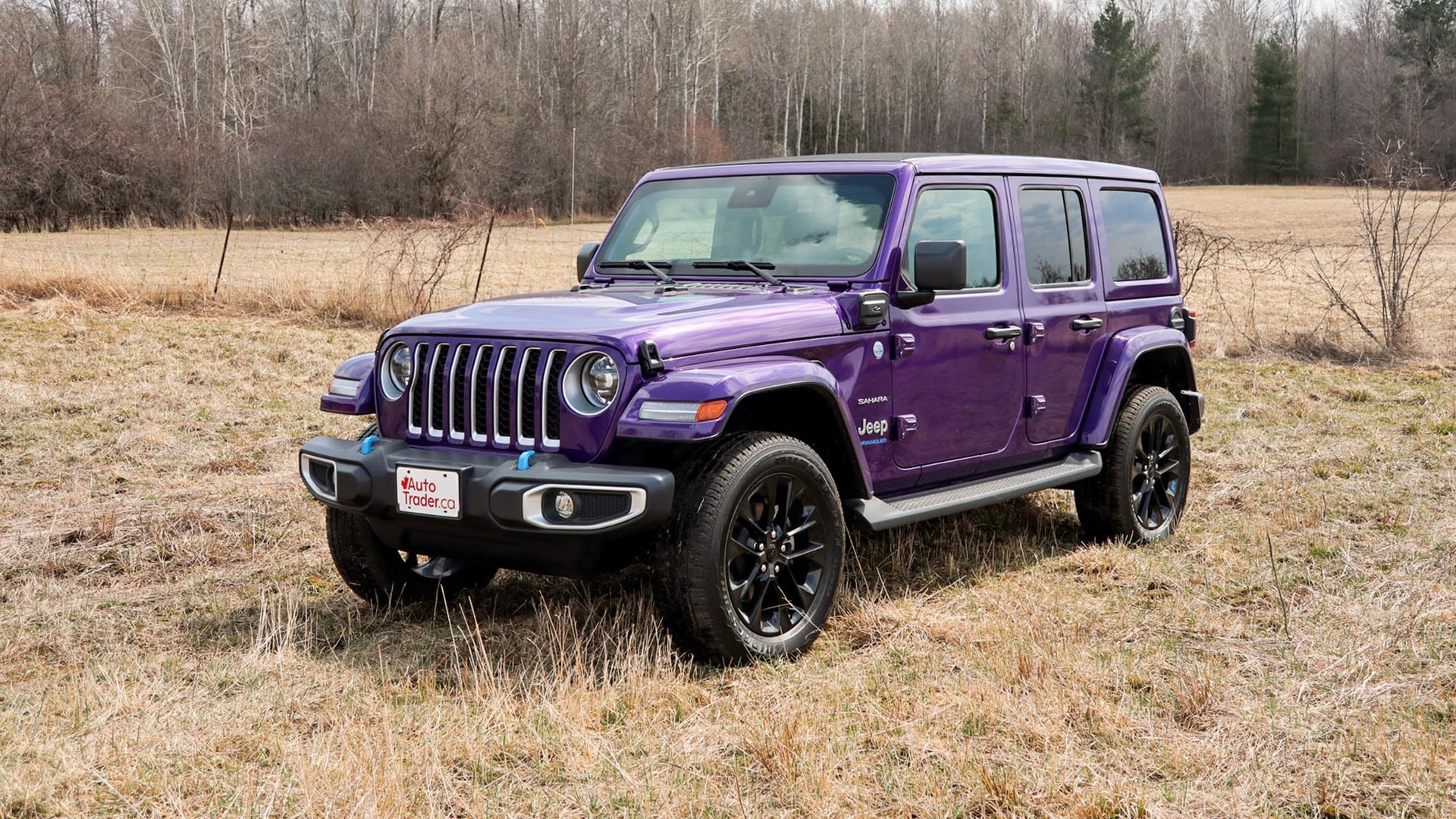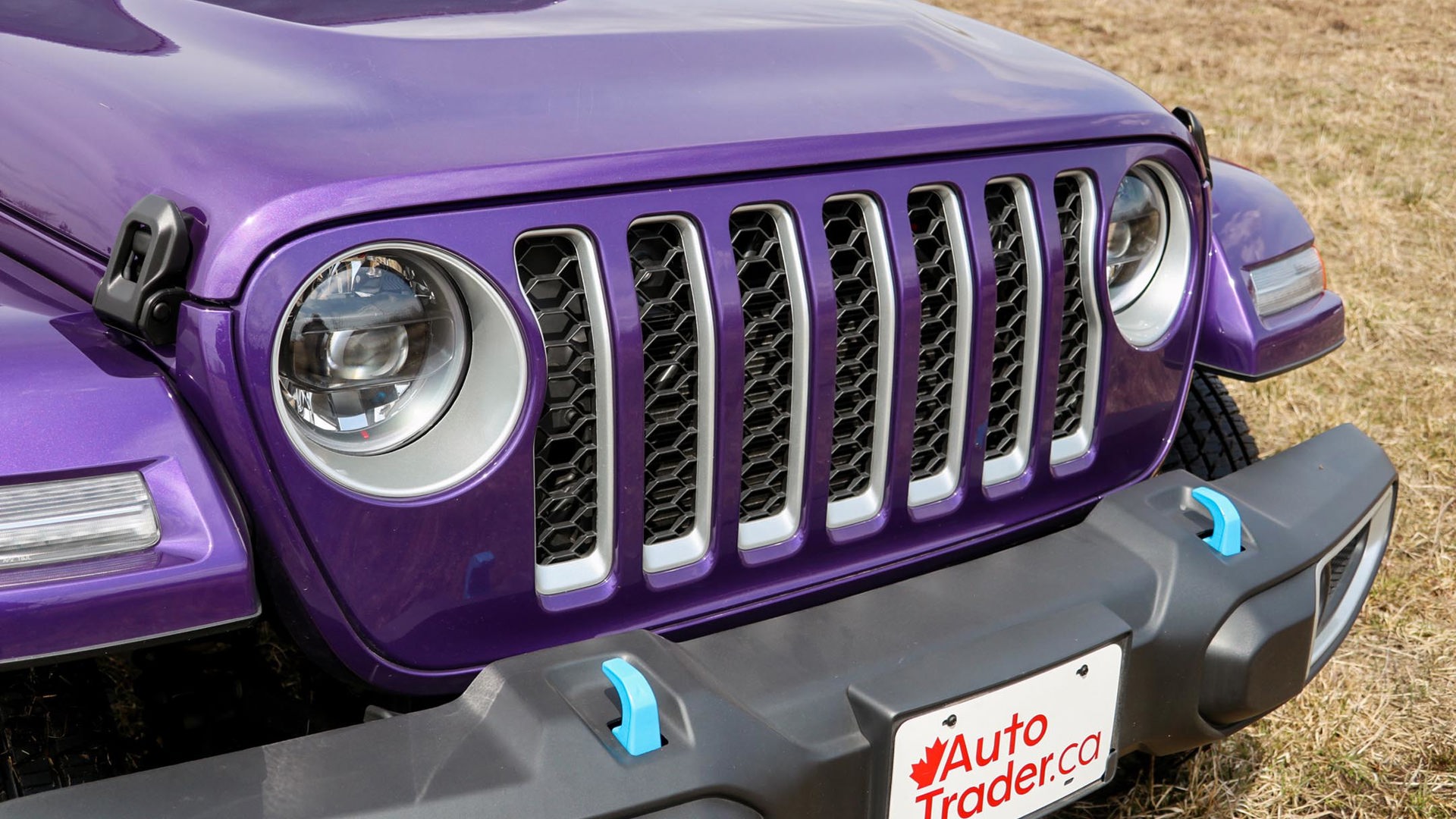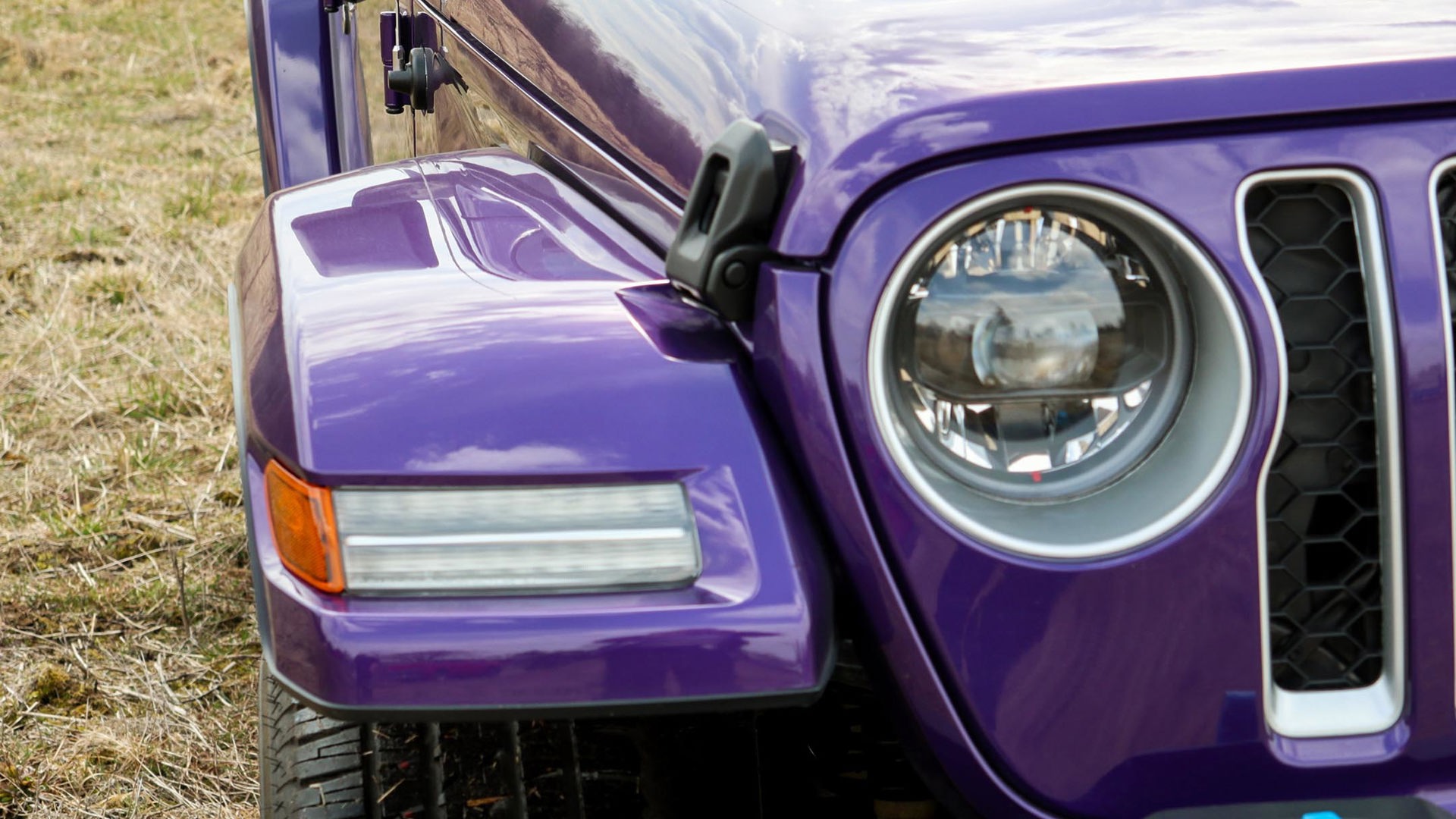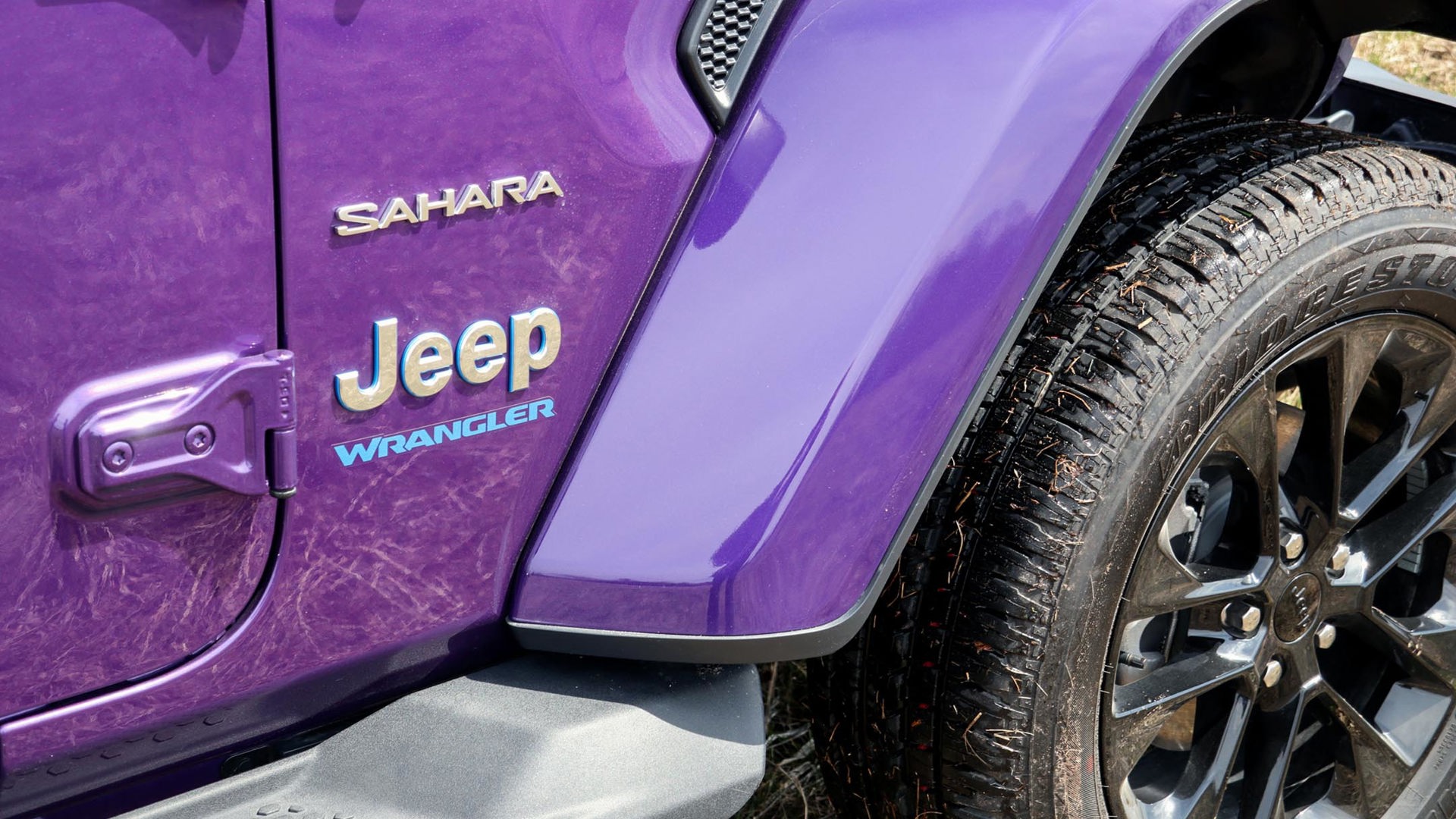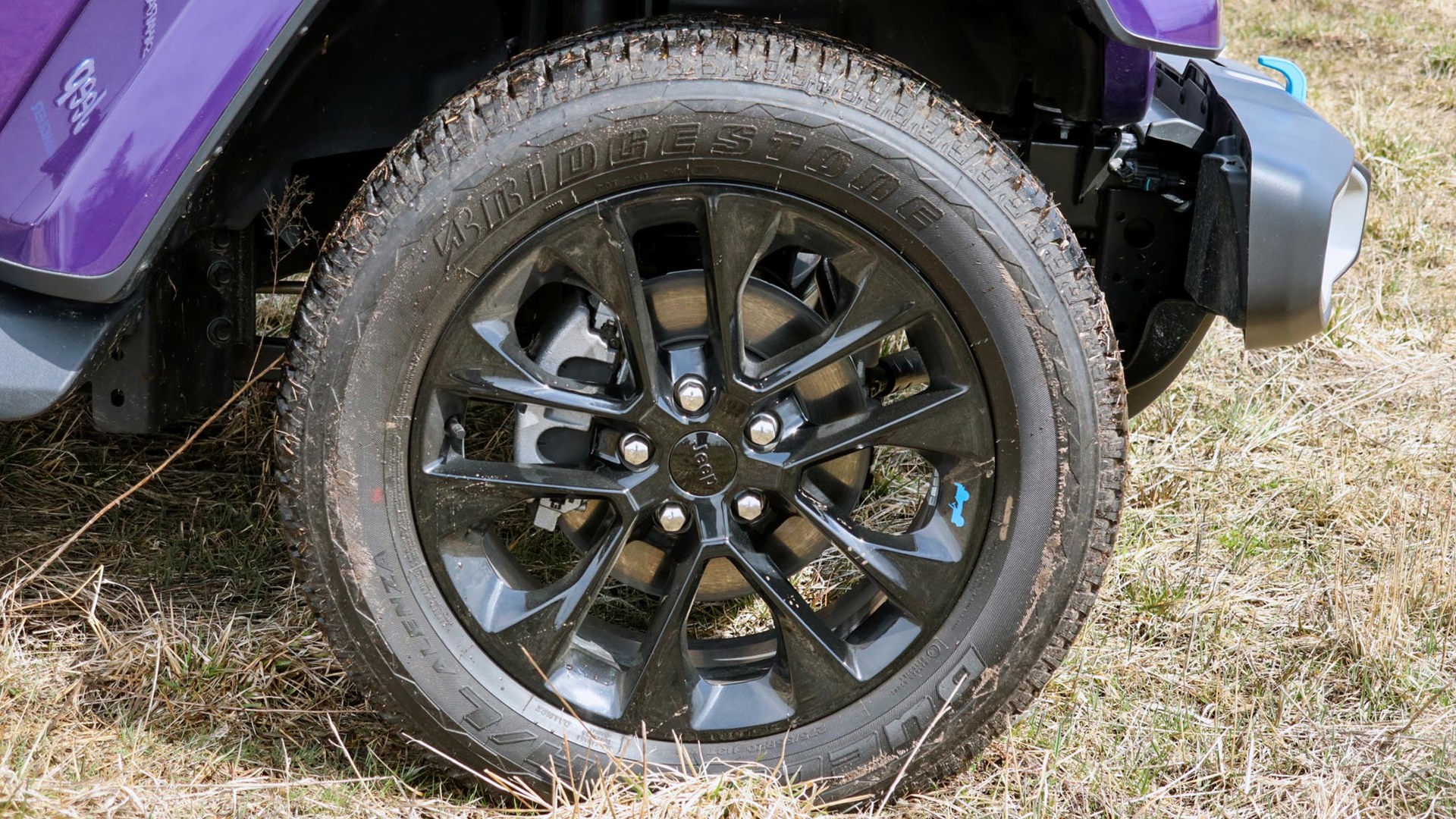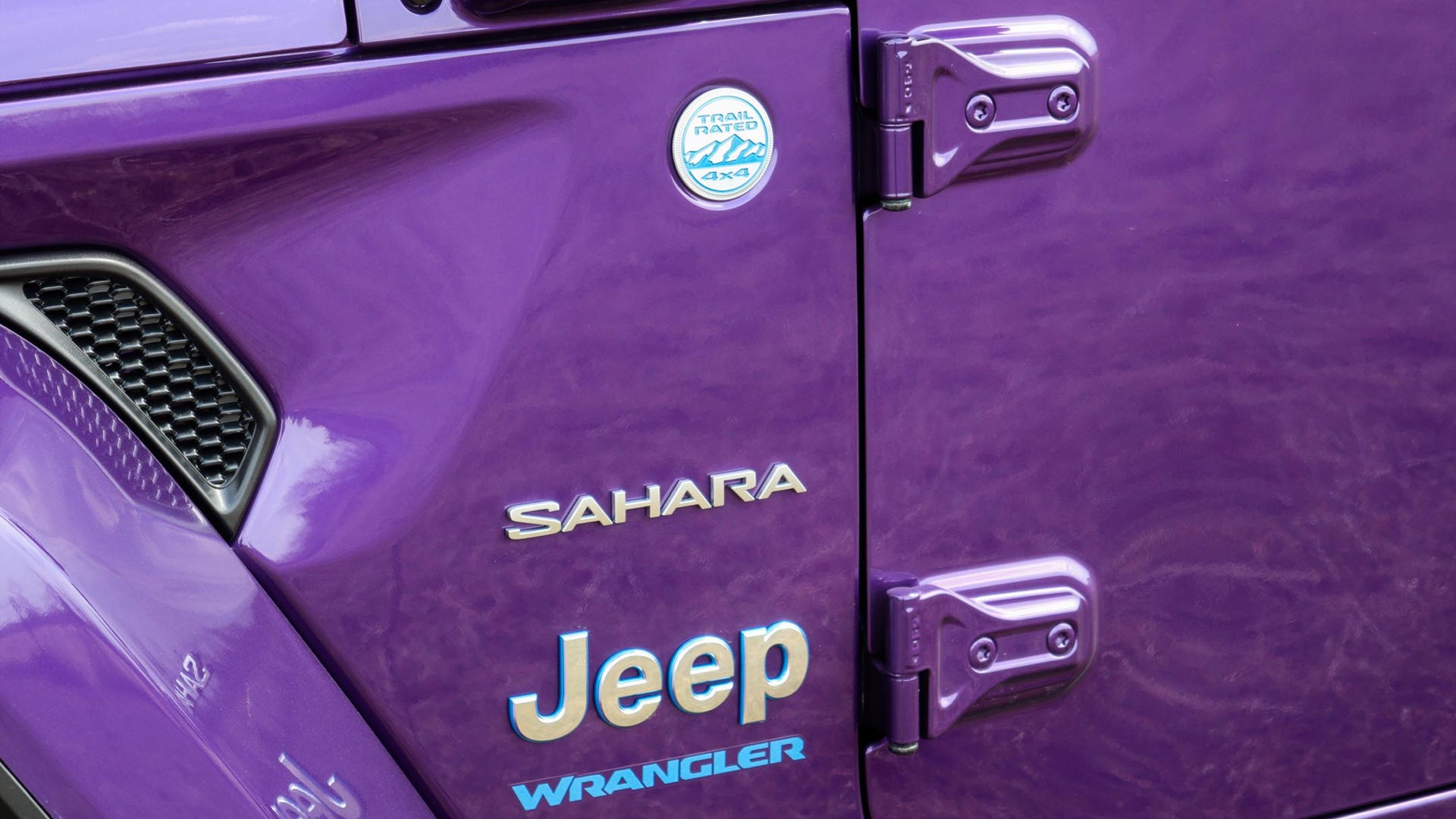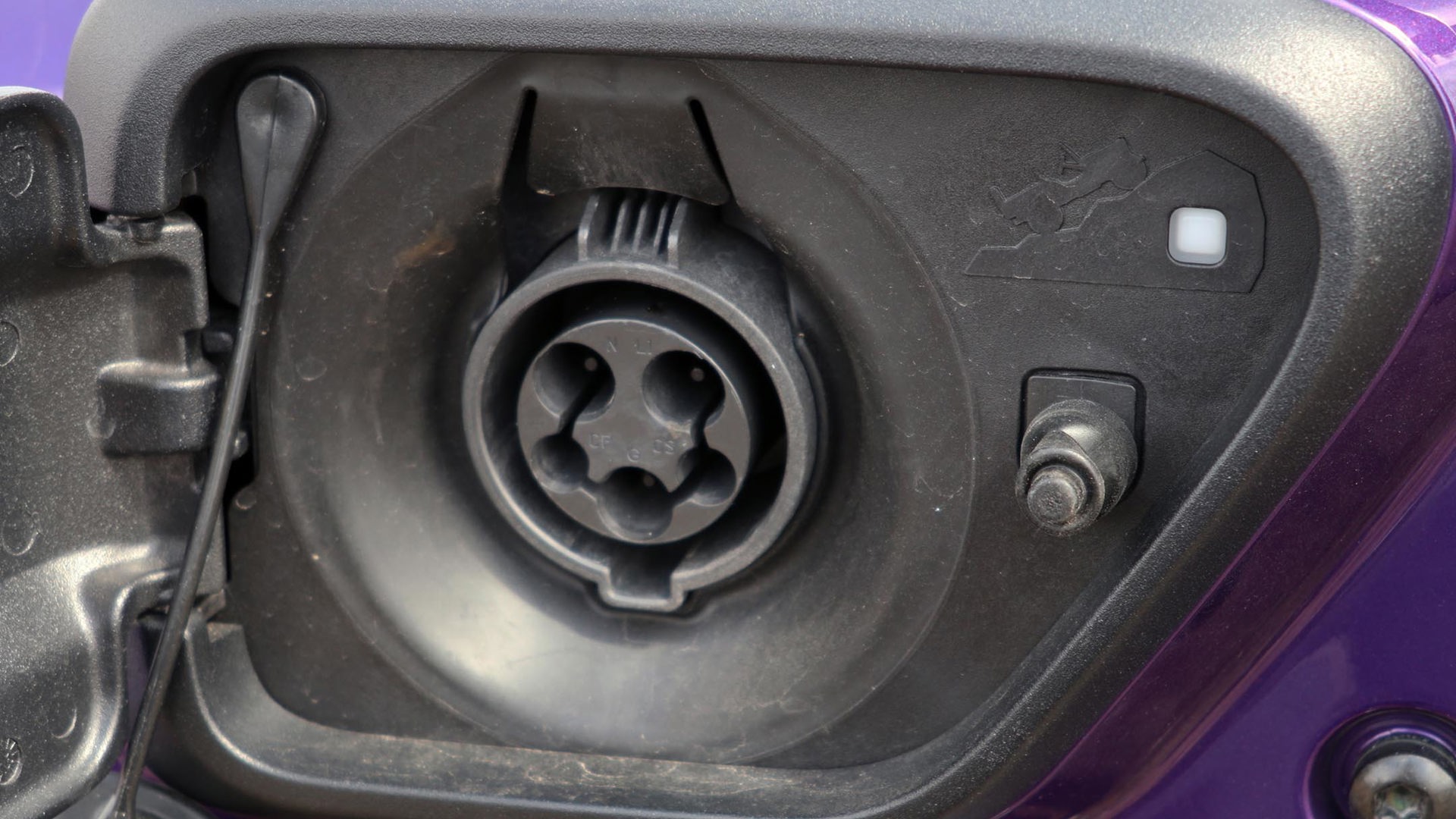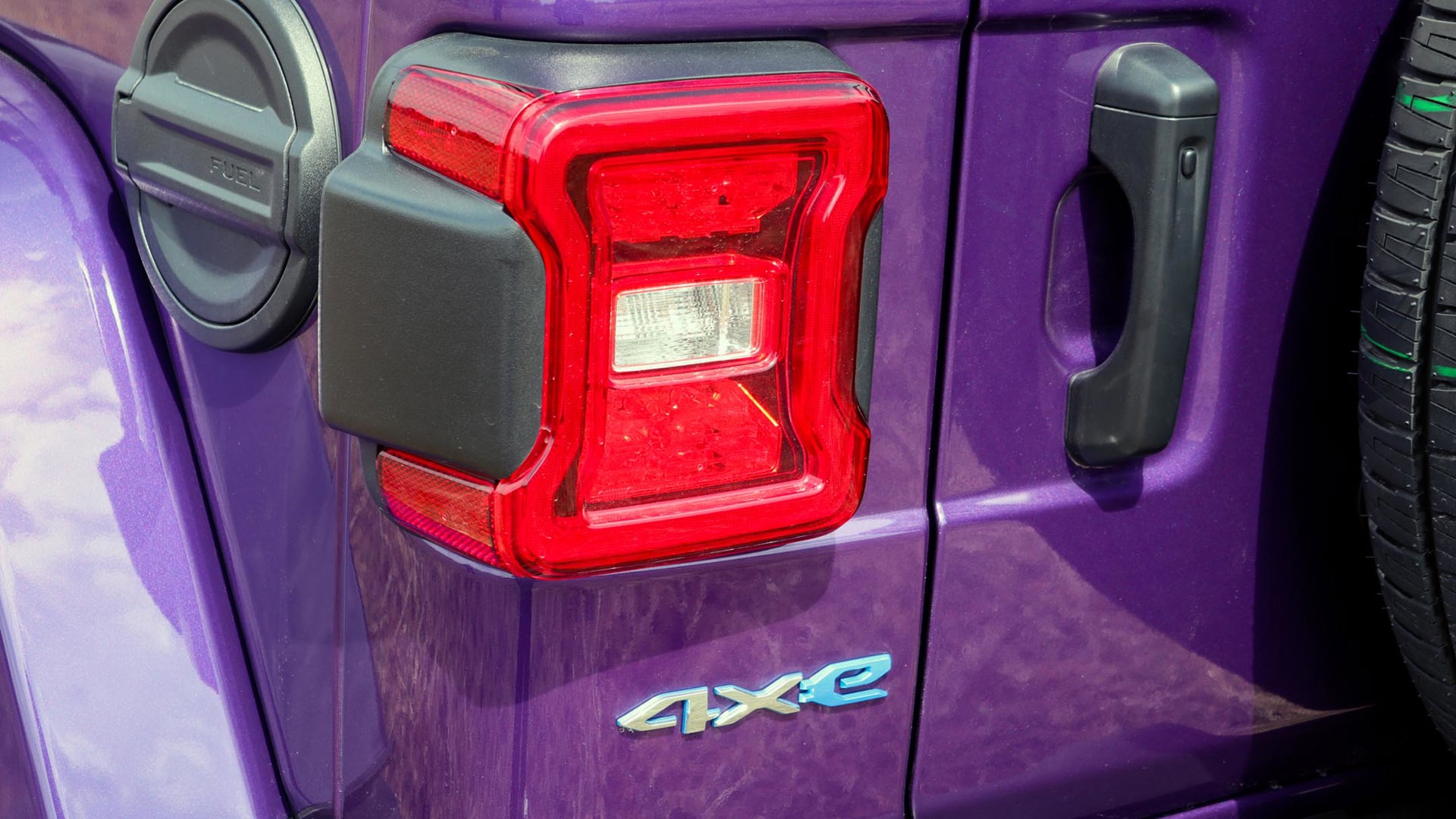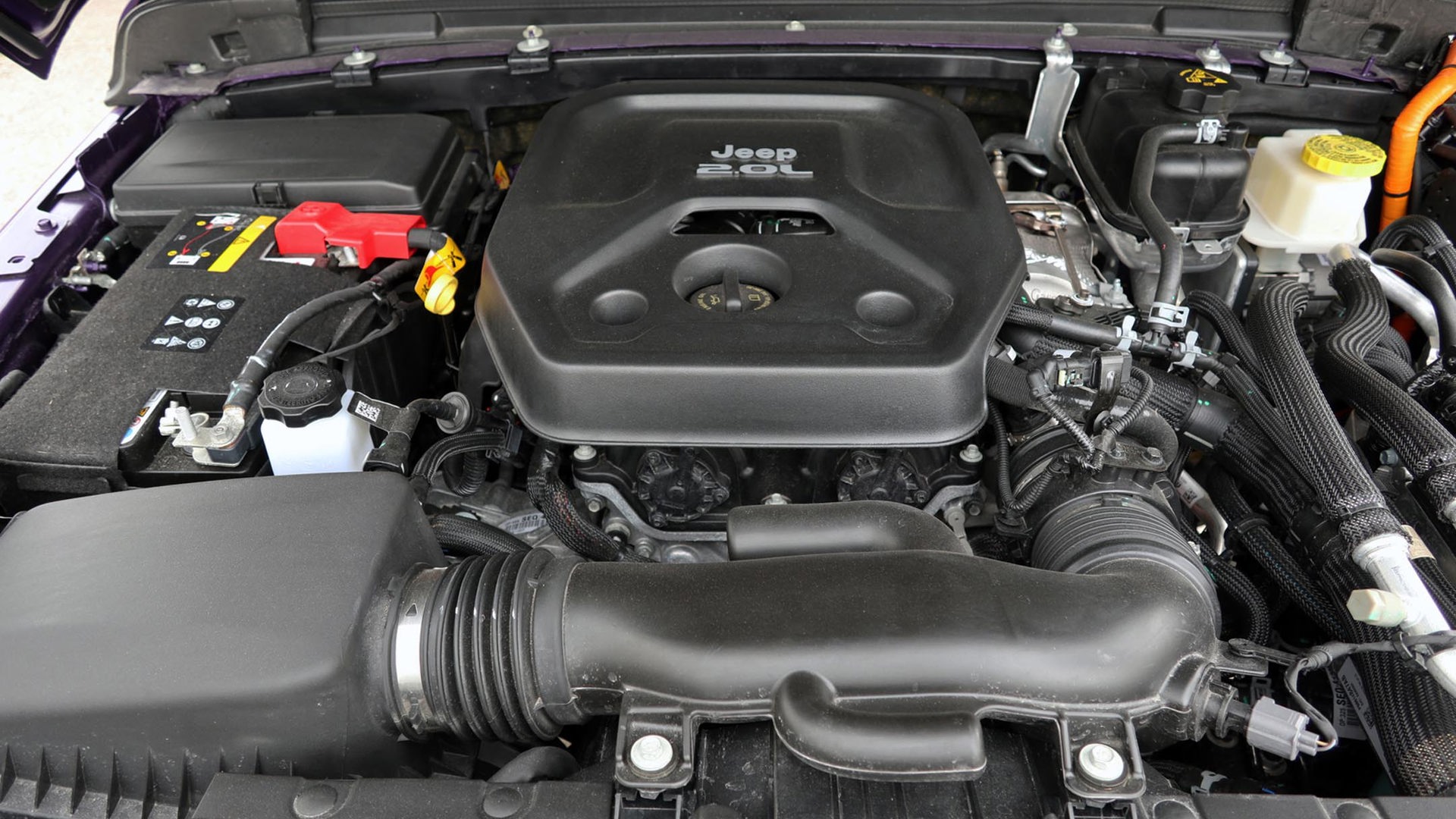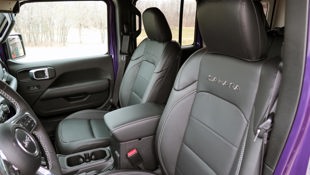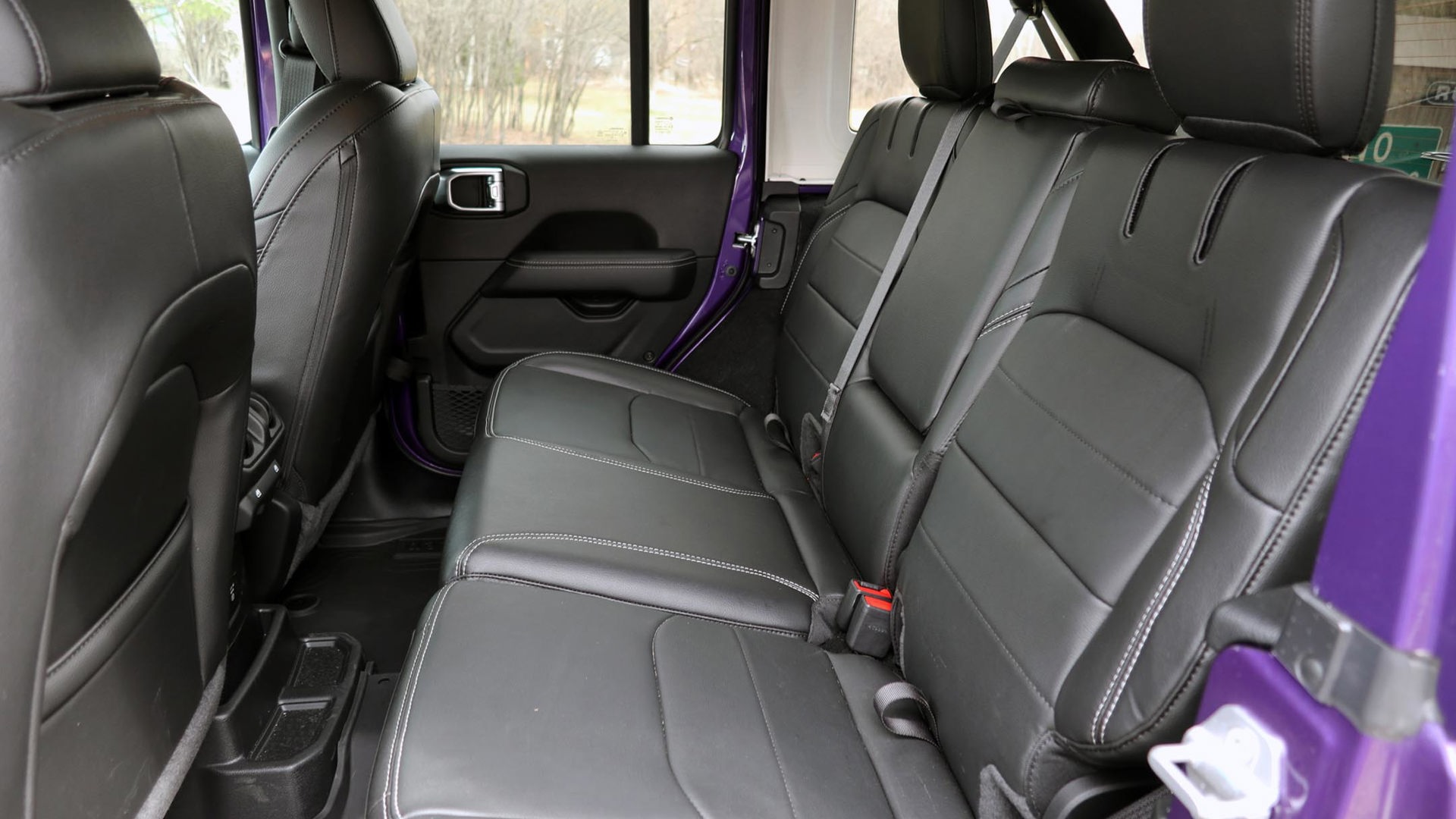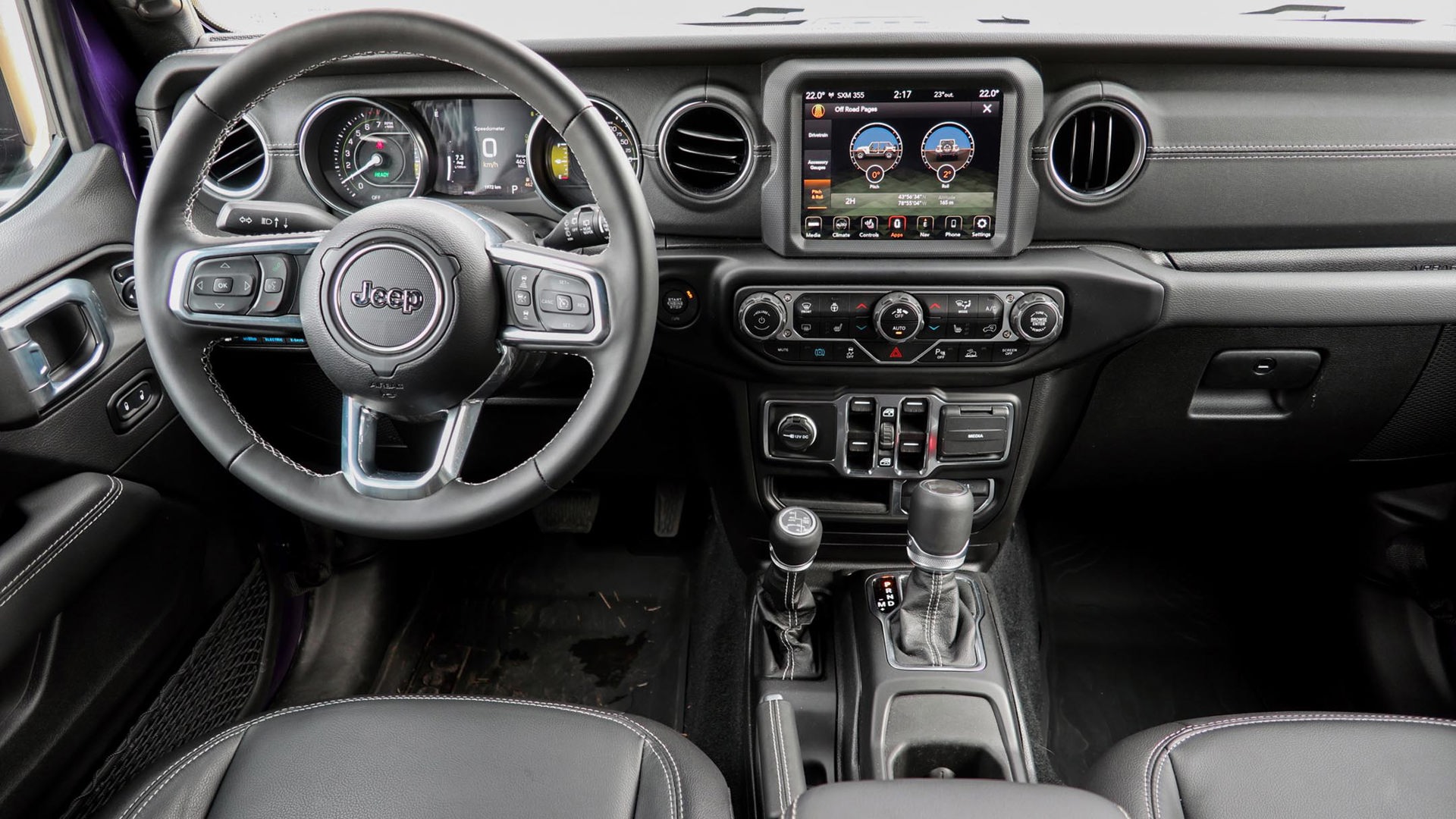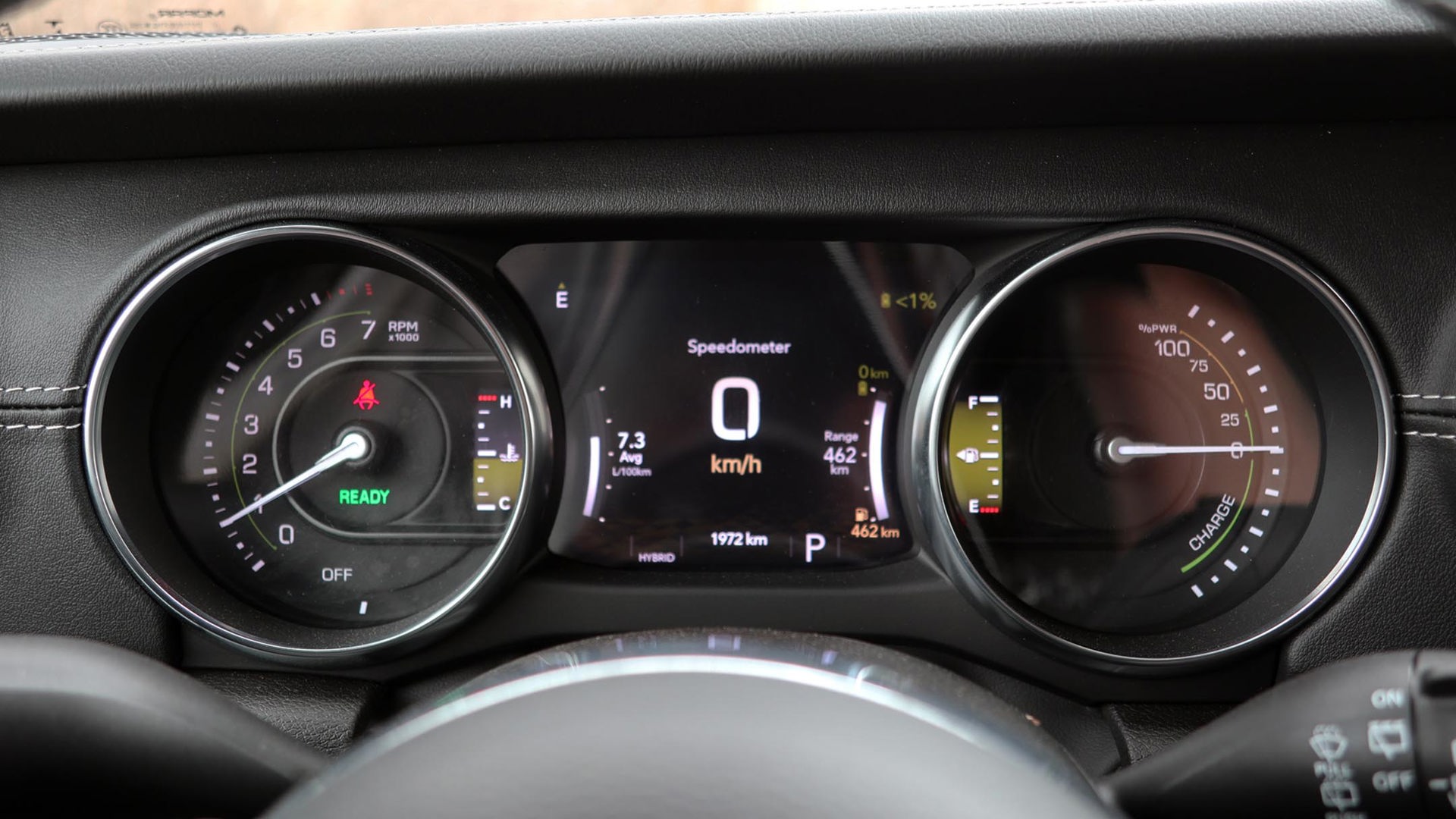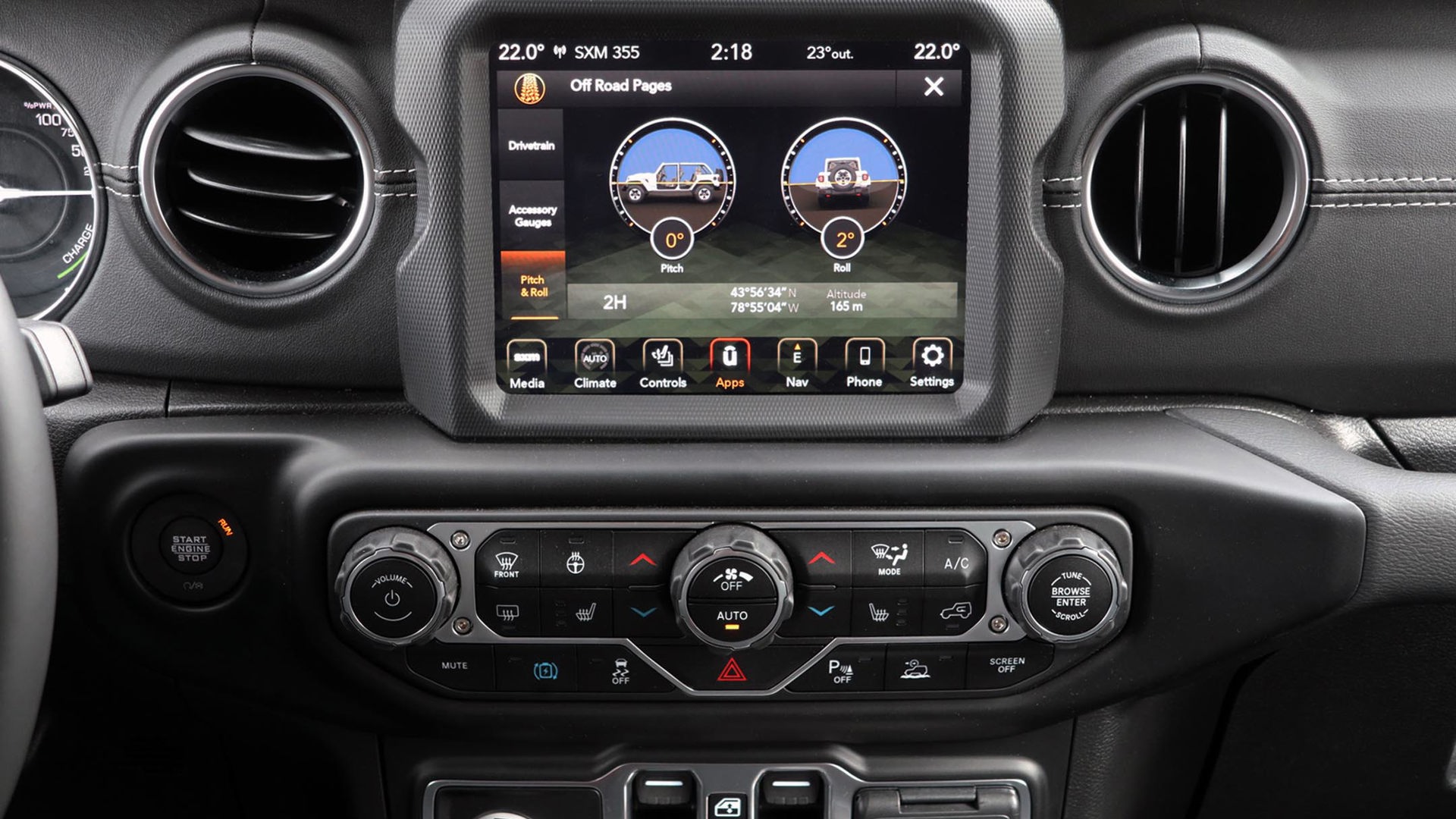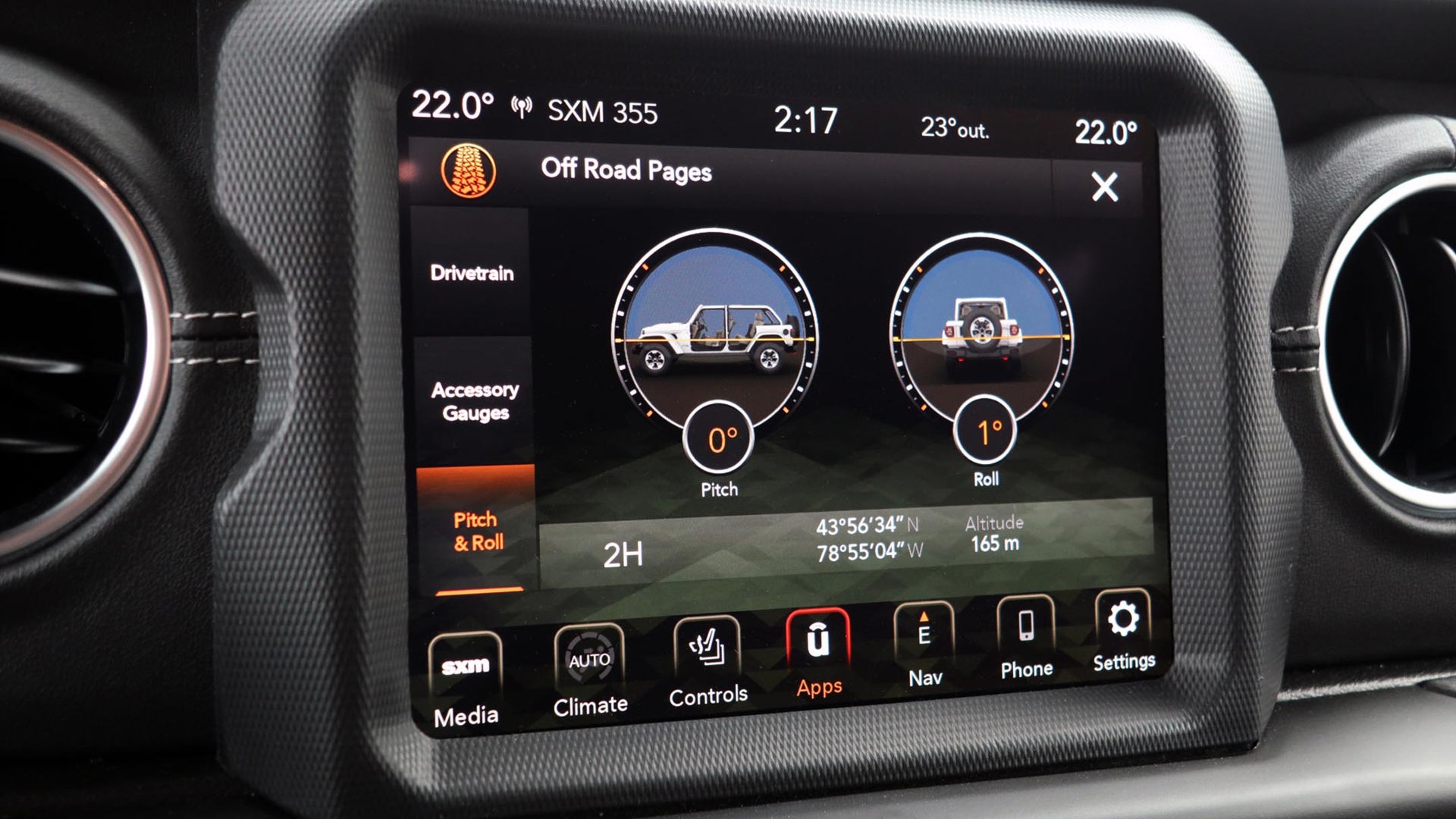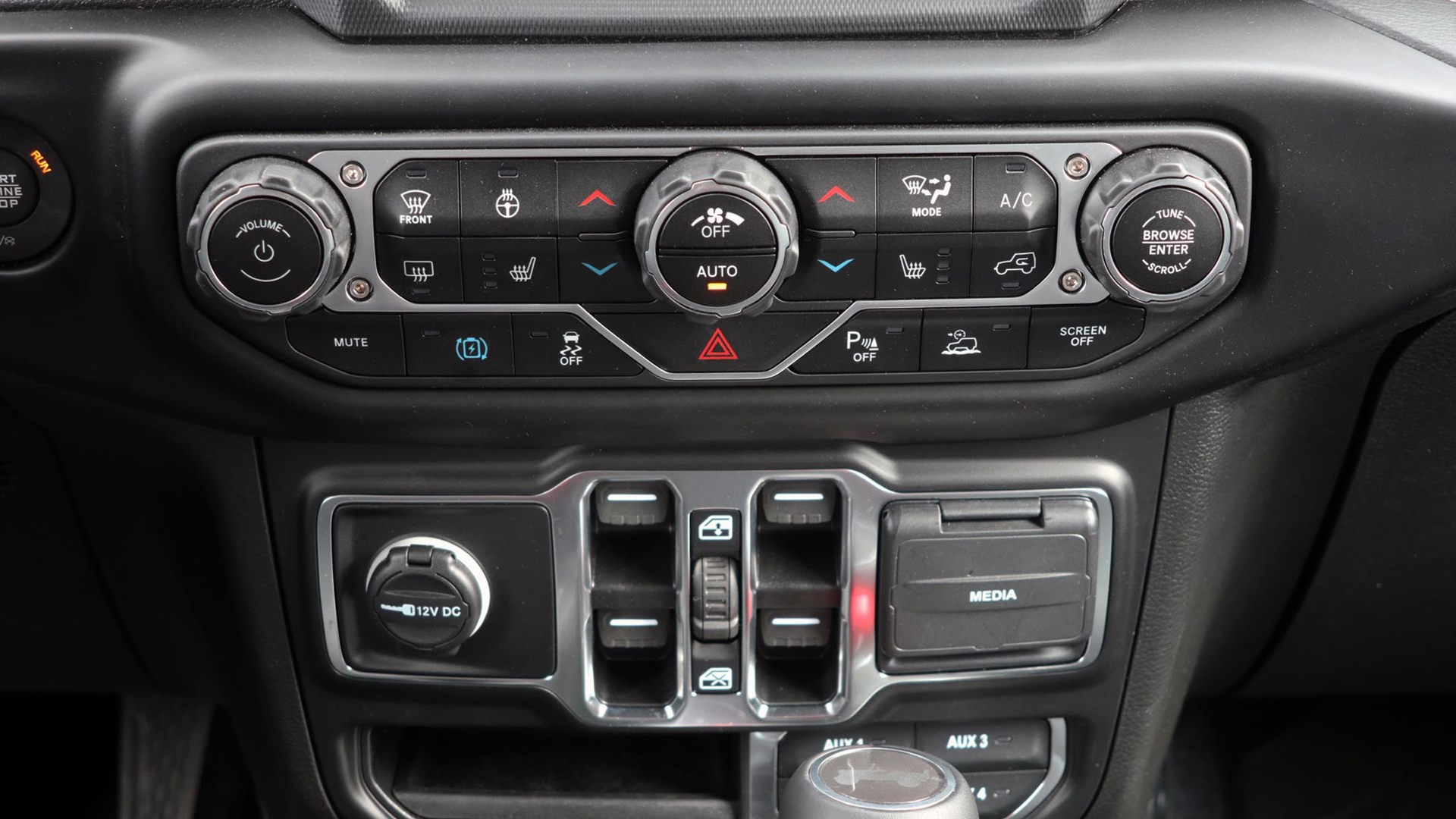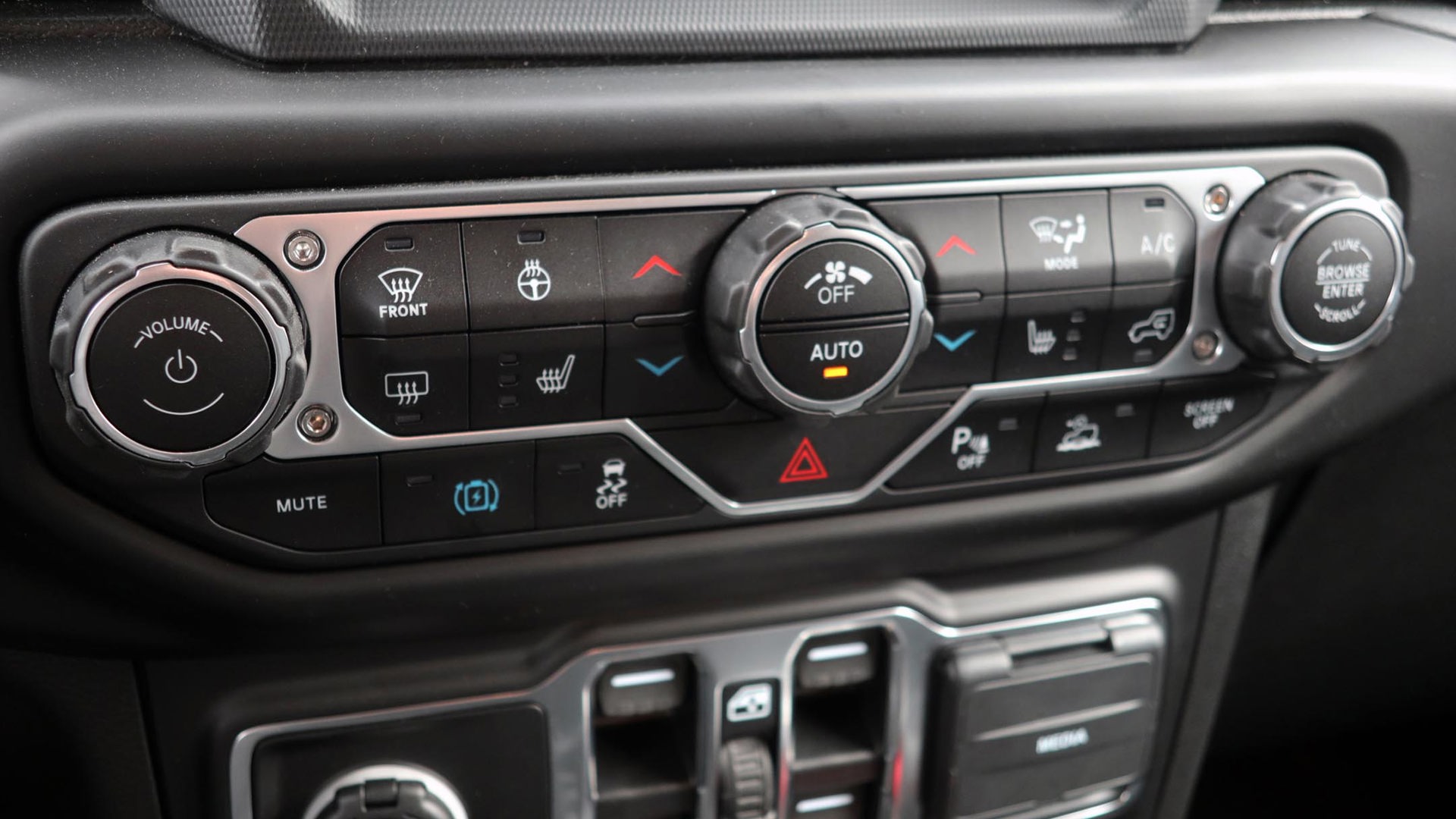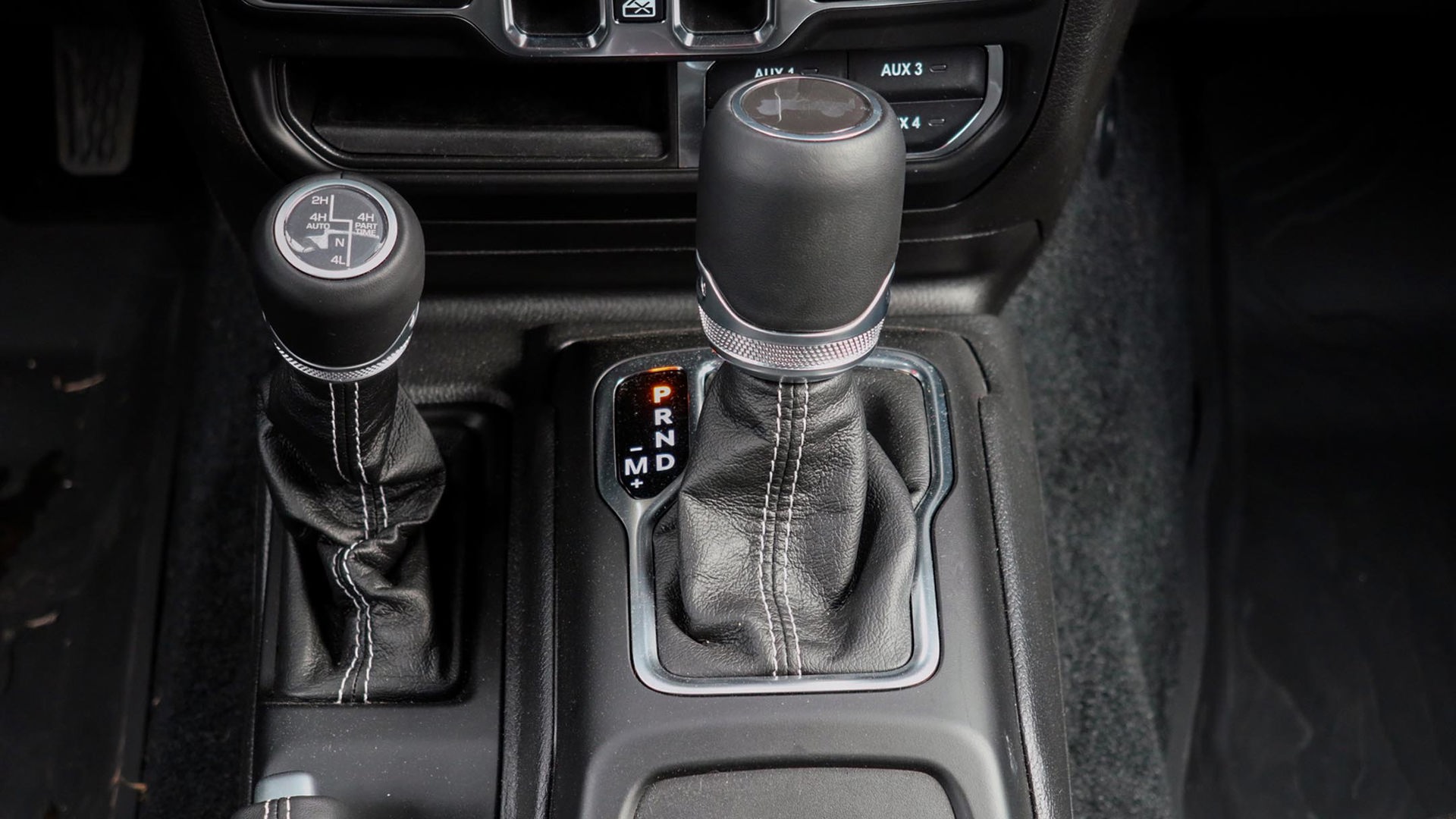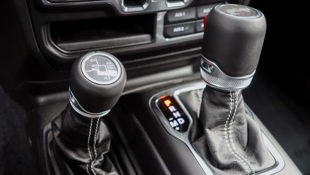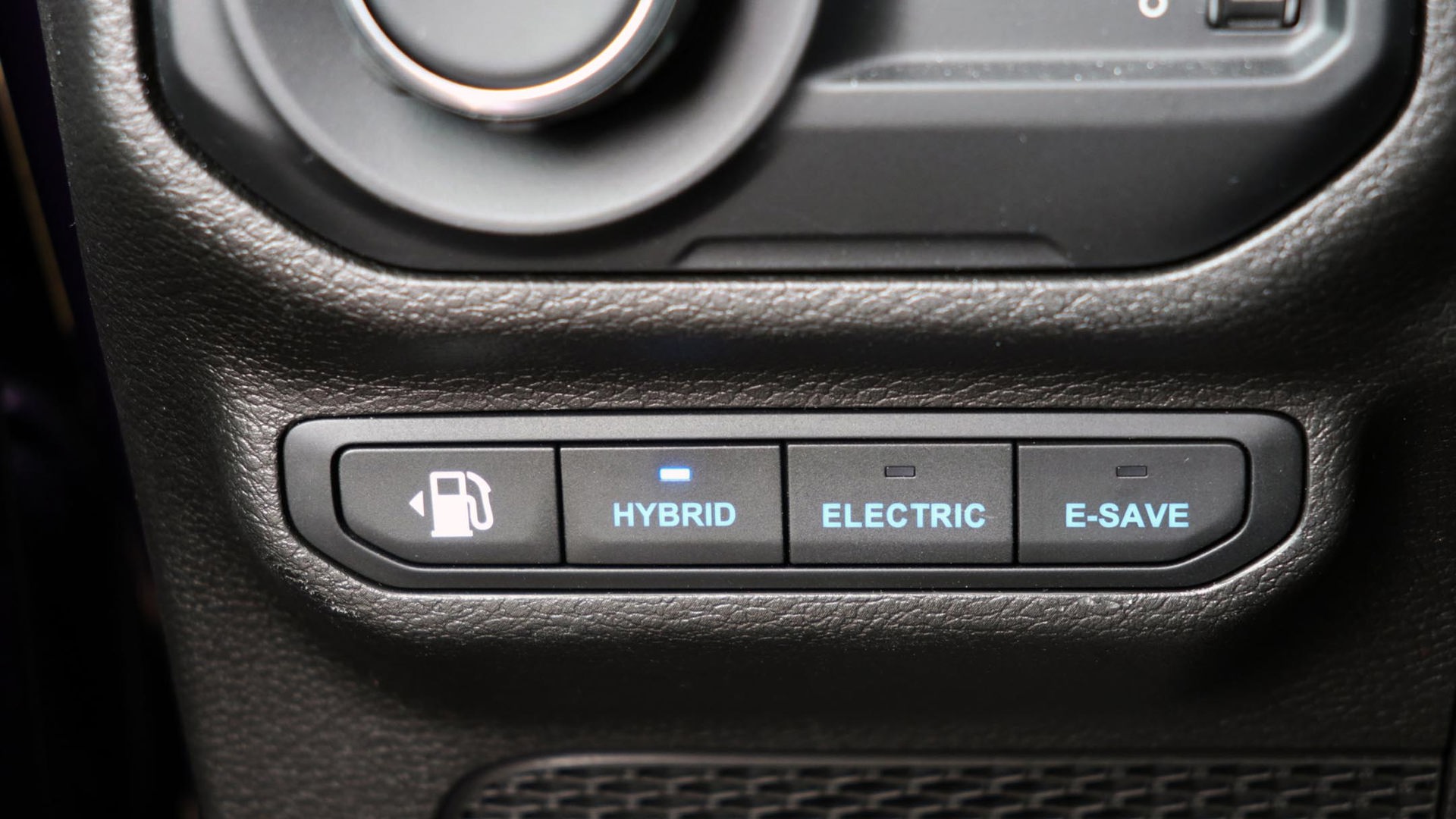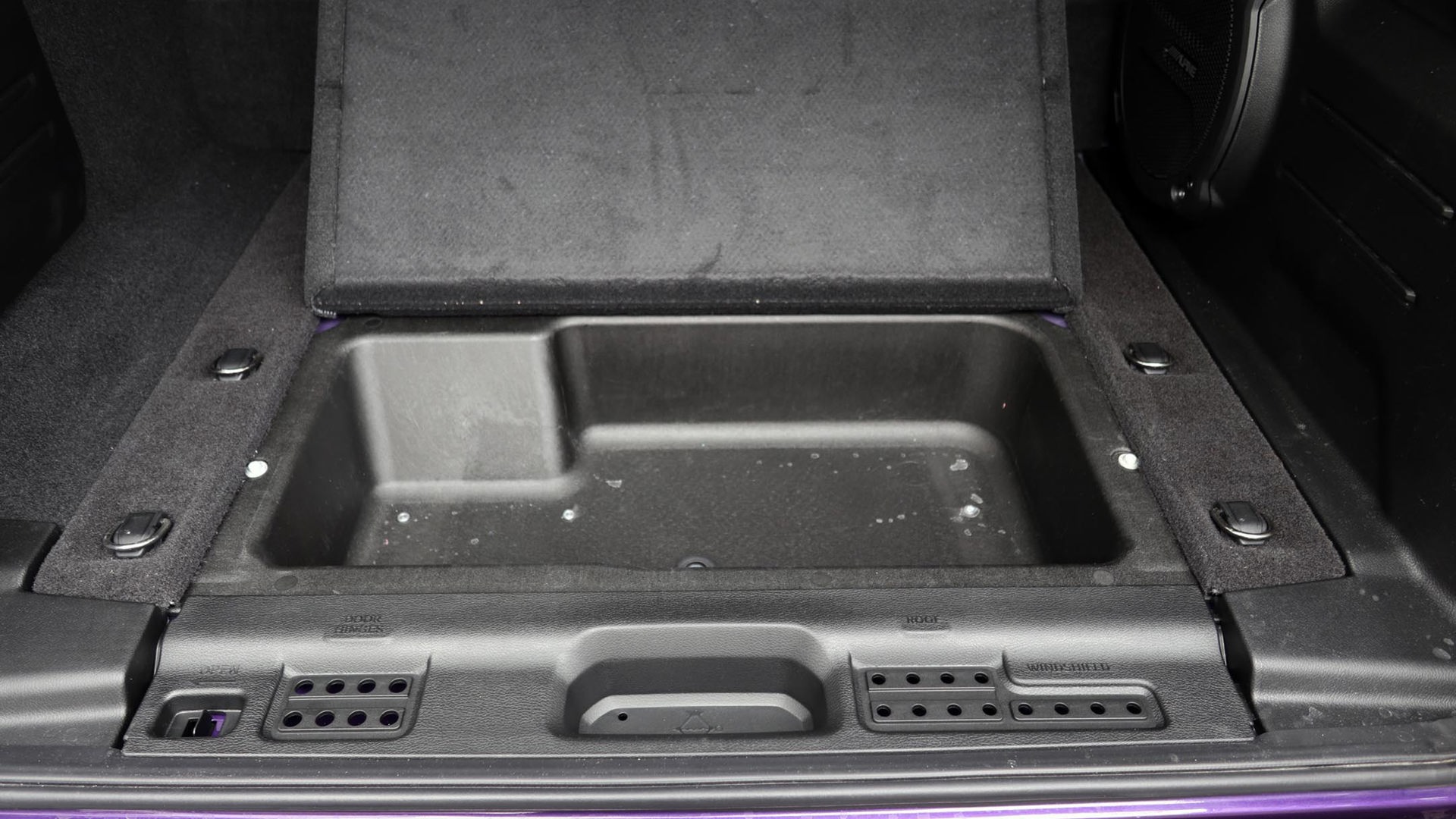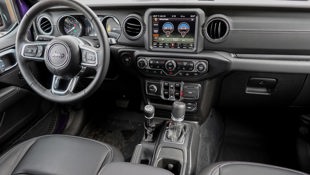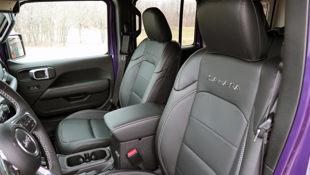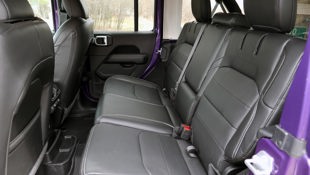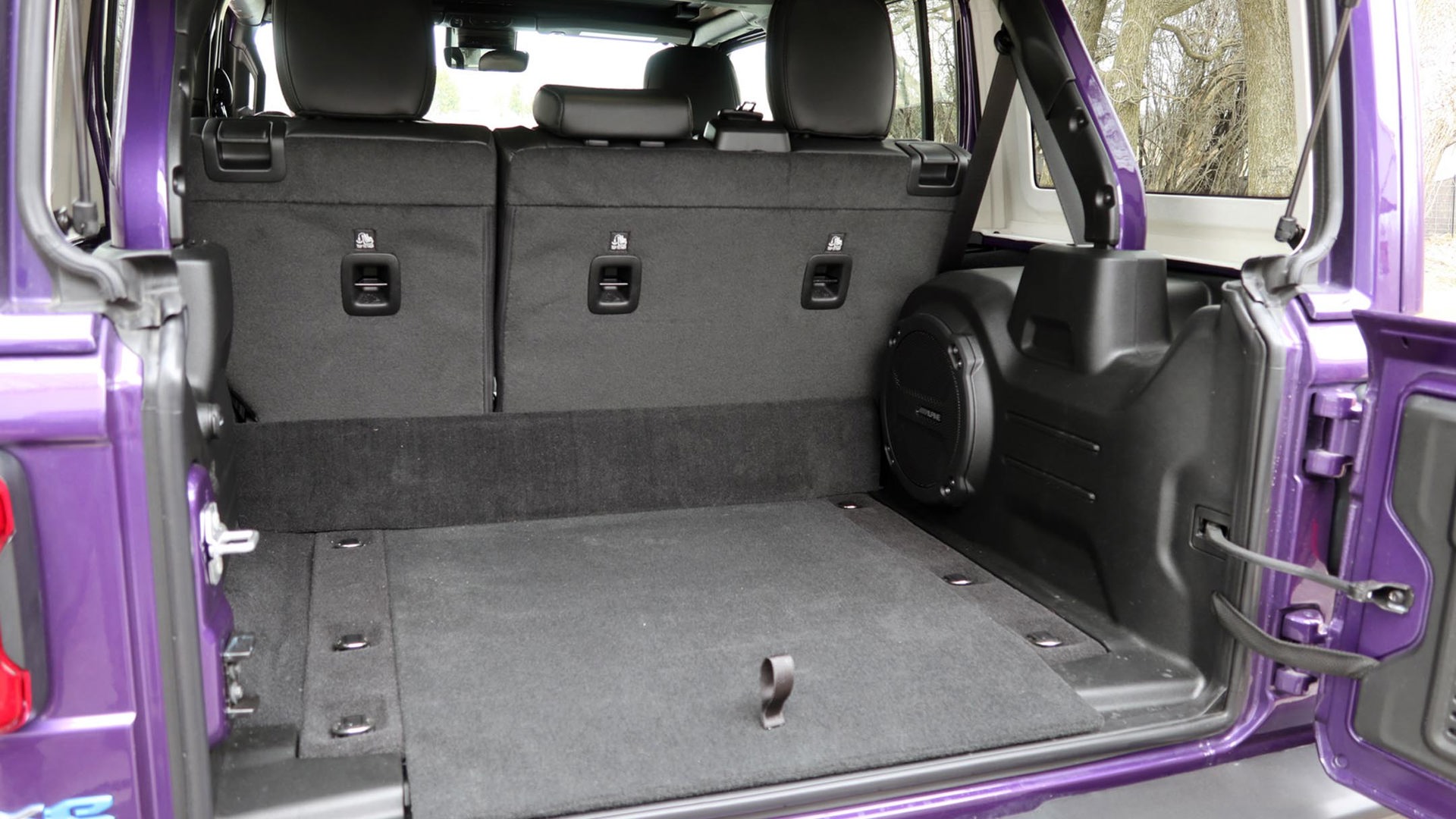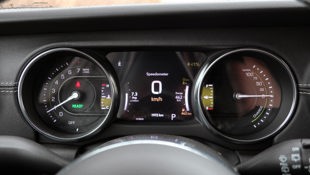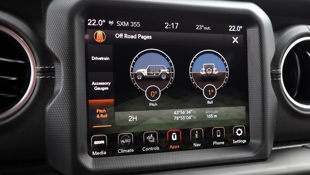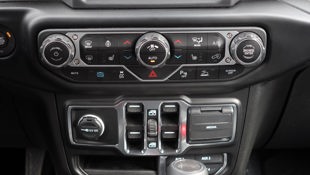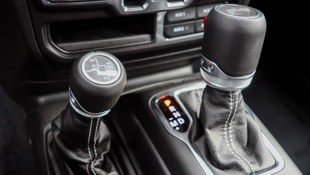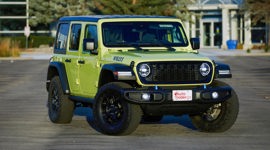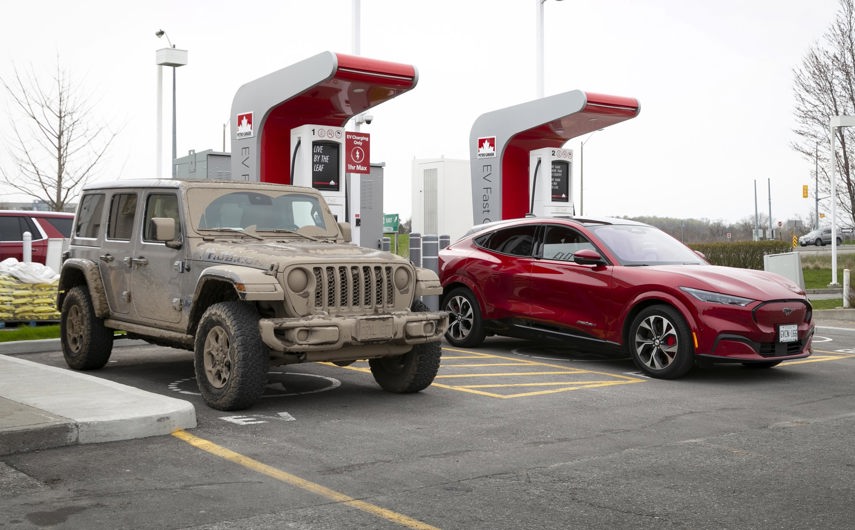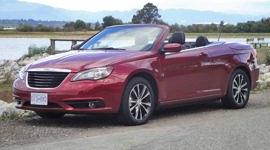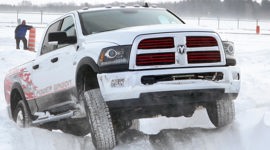 AutoTrader SCORE
AutoTrader SCORE
-
STYLING9/10
-
Safety6/10
-
PRACTICALITY8/10
-
USER-FRIENDLINESS8/10
-
FEATURES8/10
-
POWER8/10
-
COMFORT7/10
-
DRIVING FEEL8/10
-
FUEL ECONOMY8/10
-
VALUE7/10
Jeep introduced the Wrangler 4xe for 2021, and the brand claims it’s since become the best-selling plug-in hybrid (PHEV) in Canada.
The 4xe itself is unchanged for 2023, other than addition of some new exterior colours, but it now comes standard with the “Jeep Wave” program. It’s a three-year membership that includes up to six oil changes and tire rotations, and roadside protection with trip interruption and rental coverage.
The 2023 Jeep Warngler 4xe comes only as the four-door Unlimited, starting in Willys trim at $61,590, including a non-negotiable delivery fee of $2,095. I tested the mid-range Sahara at $63,590, while the Rubicon is $66,590. My tester was heavily optioned and came to $74,380 before taxes, or any applicable provincial or federal rebates.
Styling: 9/10
The Wrangler’s styling is pretty much set in stone, but with modern touches like the stylized bumpers and LED lighting. The 4xe adds blue recovery hooks and badges. Prince fans will likely go for the new-for-2023 purple Reign exterior colour, which adds $495.
The interior uses the same squared-off styling and clever touches, such as the centre touchscreen that's flanked by round vents that mirror the iconic grille and headlights, and with a bumper-like collection of buttons below them.
Safety: 6/10
The 4xe hadn’t yet been tested by the United States National Highway Traffic Safety Administration (NHTSA) at the time of this writing, but the conventional Wrangler rated four out of five stars for front crash, and three stars for rollover. The Insurance Institute for Highway Safety (IIHS) gives it the top “Good” rating for roof strength, head restraints, and the original moderate front overlap and side crash tests; but it scored “Marginal” for small front overlap, and in two updated tests – which better simulate being struck by a large SUV – it scored “Marginal” for side and “Poor” for moderate front.
The 4xe comes standard with mandatory assist features such as a back-up camera, but others are optional. My tester included a package of blind-spot monitoring with rear cross-traffic alert and rear parking assist for $945; while a $1,450 package added emergency front braking, adaptive cruise control, and automatic high-beam headlights.
Features: 8/10
The 4xe Sahara includes 20-inch wheels, dual-zone automatic climate control, an integrated garage door opener, 8.4-inch touchscreen, and push-button start. My tester's options included heated seats and steering wheel, remote engine start, the towing package, and side steps.
A three-piece removable hardtop is standard, but I had an optional “Sky One-Touch” roof. It’s pricey at $4,295 but worthwhile to consider, especially since it’s a lot of work to take the hard roof off. It can’t be removed, but its full-width and almost-full-length soft insert slides back electrically for an open-air feel, and the rear quarter windows come out. The doors can still be removed, but the windshield shouldn’t be folded down.
User-Friendliness: 8/10
The Wrangler has been modernized over the years but it's still old-school at heart, and that includes buttons and dials instead of stuffing all the functions behind the touchscreen. Cabin temperature, heated seats, and stereo controls are all operated via hard buttons – and if something is in the screen, the infotainment system is among the best around for ease of use.
There are a couple of items that you’ll have to consider part of the old-school charm, though. Rather than a button or dial for four-wheel drive, there’s a stiff mechanical lever that can require some muscle. Folding down the rear seats isn’t tough but it’s a two-step process of flipping up the cushion before the seatback goes down.
Practicality: 8/10
The Wrangler is a purpose-built off-road vehicle, and how you define its practicality depends on how you plan to use it. It will get you to work or bring home your groceries just fine, but it’s not really intended to be a long-distance family hauler like, say, the Grand Cherokee or Wagoneer. The cargo compartment measures 784 L with the rear seats up, and 1,908 L with them folded; and towing capacity is 1,610 kg (3,500 lb). The floor has drain plugs for washing it out, but you’ll need to remove the carpet first. That floor covering reduces noise and weight versus a vinyl floor, but it isn’t as practical in something intended for getting dirty.
Comfort: 7/10
The Wrangler is a tight fit, with a narrow cabin and not much space between the seats and dash. The driver’s seat is manually-adjustable, so be sure you can find the right position. A dead pedal for the left foot would be a very welcome addition, both for comfort on pavement and support when off-roading. They’re available as aftermarket solutions, but for whatever reason Jeep doesn’t put one in.
However, the chairs are supportive, and the 4xe’s rear doors make it easier for back-seat passengers than squeezing into the two-door Wrangler. The ride is bumpy and the cabin is noisy, but that’s part-and-parcel of a dedicated off-road vehicle. [The Ford Bronco has other ideas, although it's gas-only.–Ed.]
Power: 8/10
The Wrangler 4xe uses a turbocharged 2.0L four-cylinder engine that’s also available in the conventional Wrangler. It makes 270 hp and 295 lb-ft of torque and comes mated to an eight-speed automatic transmission. It’s further equipped with two electric motors for hybrid capability, running on gasoline, electrons, or a combination of both, depending on driving conditions. After it’s been charged – on household current or a 240-volt Level 2 charger – you get up to 35 km of electric-only operation. When that depletes, it reverts to hybrid operation. That range is a bit optimistic, as the 4xe’s 2,313-kg (5,099-lb) curb weight and its off-road tires tend to chew it up quickly.
The system is a good fit to this Wrangler, with strong and smooth acceleration and more than enough passing power. There are three settings: for hybrid, for electric-only, and one that runs on hybrid while preserving the stored charge for later use. But it isn’t like most hybrids that switch to battery power as often and as long as possible. Instead, it’s more about a fuel-free boost of power, as even in the EV-only setting will call in the gasoline engine if you hit the throttle hard enough.
Driving Feel: 8/10
The 4xe’s four-wheel drive system includes settings for two-wheel; four-wheel high- and low-range fearing for off-road; and an automatic mode that can be used on pavement. Plugging in gives you the 35-km EV range, while the hybrid system recharges itself through regenerative braking. A button on the dash increases regeneration and it will slow the vehicle down, although not quite enough to qualify as one-pedal driving where you only need to use the throttle pedal to bring it to a halt.
If you’re new to the Wrangler, test-drive it thoroughly before you commit, because it’s probably unlike anything you’ve driven before. The steering is light and responsive, but it’s also noisy, the ride is firm, and you must frequently make minor corrections to keep it straight on the highway. Those aren’t criticisms – it’s how this vehicle drives when it’s not crawling up the side of a mountain, so just be sure you can live with that. [As the saying goes, a Wrangler will go anywhere but a straight line.–Ed.]
Fuel Economy: 8/10
The Wrangler 4xe is rated by Natural Resources Canada (NRCan) at 11.6 L/100 km in the city, 11.9 on the highway, and 11.7 in combined driving. As with other hybrids, it gets better mileage in city driving because it can spend more time on its battery.
Those are high numbers for a hybrid, and the 4xe actually gets marginally worse mileage than the conventional Wrangler Sahara with 2.0L engine, likely because the PHEV weighs 314 kg (654 lb) more. It’s all about plugging it in, where the 4xe returns 4.8 Le/100 km (litres equivalent, the electrical energy equivalent of gasoline energy). You don’t have to plug in the 4xe in order to drive it, but it’s the whole point. I plugged in whenever I had the chance, and my week’s gasoline bill was an average of 4.9 L/100 km.
Value: 7/10
At a starting price of $63,590, the Sahara 4xe is $5,900 more than the gas-only version, and that’s a chunk of change. NRCan estimates you’ll save $462 a year in fuel with the 4xe, and of course likely even more if you plug it in faithfully and stay within its range; but it’s still a lot of money to make up. The price will probably be easiest to swallow for passionate off-roaders who want silent, fuel-free driving on the trails.
The Verdict
Usually we list a vehicle’s competitors, but the Wrangler’s only direct rival is the Ford Bronco, and it isn’t available with hybrid or PHEV power. The 2023 Jeep Wrangler 4xe is fun to drive, it laughs at the gas pump if you charge it regularly, and maintains the off-road ability that made this vehicle famous. It’s in a very specific niche and isn’t for everyone, but the right buyers should be very happy with it.
| Engine Displacement | 2.0L |
|---|---|
| Engine Cylinders | I4 |
| Peak Horsepower | 270 hp @ 5,250 rpm |
| Peak Torque | 295 lb-ft @ 3,000 rpm |
| Fuel Economy | 11.6 / 11.9 / 11.7 L/100 km cty/hwy/cmb gas-electric hybrid; 4.8 Le/100 km electric-only |
| Cargo Space | 784 / 1,908 L seats up/down |
| Model Tested | 2023 Jeep Wrangler Sahara 4xe |
| Base Price | $61,495 |
| A/C Tax | $100 |
| Destination Fee | $2,095 |
| Price as Tested | $74,480 |
|
Optional Equipment
$10,790 – Reign paint, $495; Cold Weather Group of heated seats, heated leather-wrapped steering wheel, and remote starter, $1,095; Trailer Tow package, $995; Safety Group of rear park assist and blind-spot monitoring, $945; Advanced Safety Group of emergency front braking, adaptive cruise control, advanced brake assist and automatic high-beam headlamps, $1,450; Mopar all-weather floor mats, $225; Trac-Lok limited-slip rear differential, $695; Side steps, $595; Sky One-Touch power roof, $4,295
|
|
